“All you need is love. But a little chocolate now and then doesn’t hurt.” – Charles M. Schulz, American cartoonist
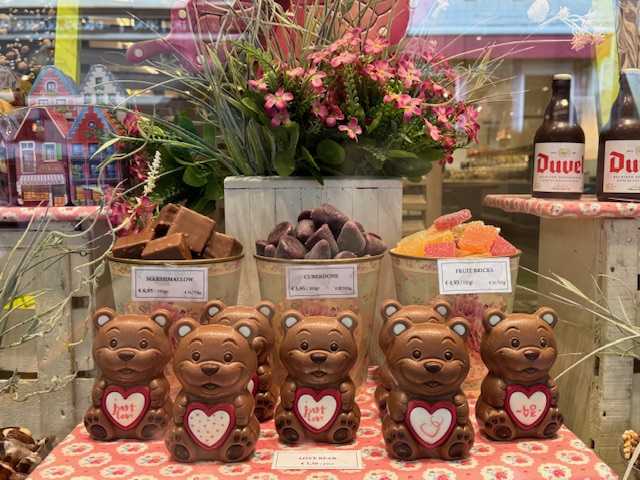
Brussels, Belgium
Eurostar will take us quickly to Brussels from Amsterdam, a short two-hour train ride south, speeding through the flat countryside’s of The Netherlands and of the smaller Belgium. History note: after a 20-year French occupation, a Kingdom of The Netherlands was formed in 1815. In 1830, Belgium seceded and formed its own separate Kingdom. The current government is a “hereditary parliamentary constitutional monarch” … don’t ask!
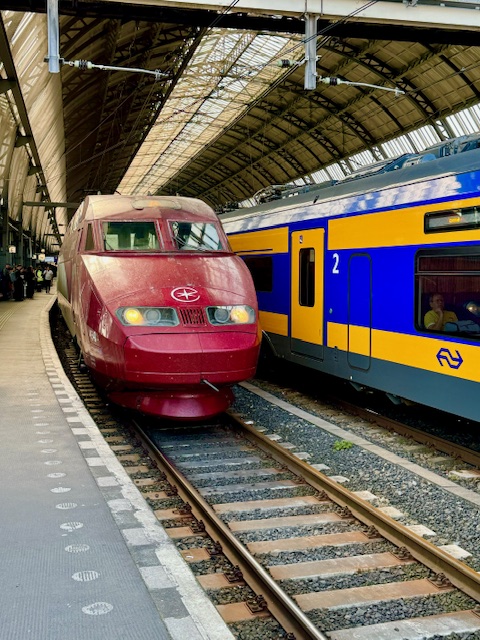
After dropping off our bags, we hit the wet pavement under a light rain to see the city sites of this capital city. Brussels also serves as the de facto capital of the European Union (EU). It’s known for its stunning architecture, including the Grand Place, a UNESCO World Heritage Site, and its famous little Manneken Pis statue.
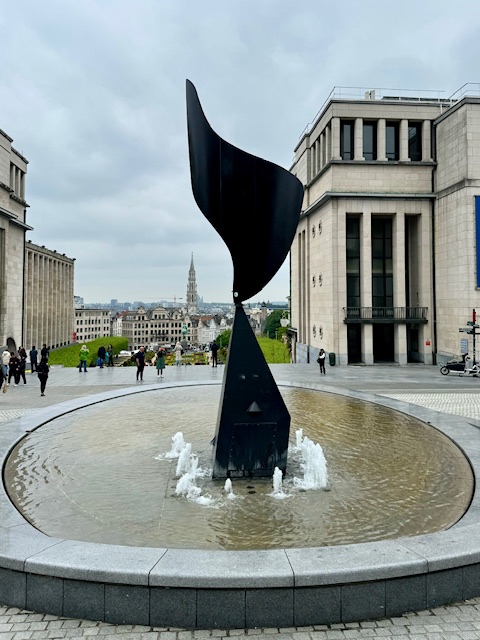

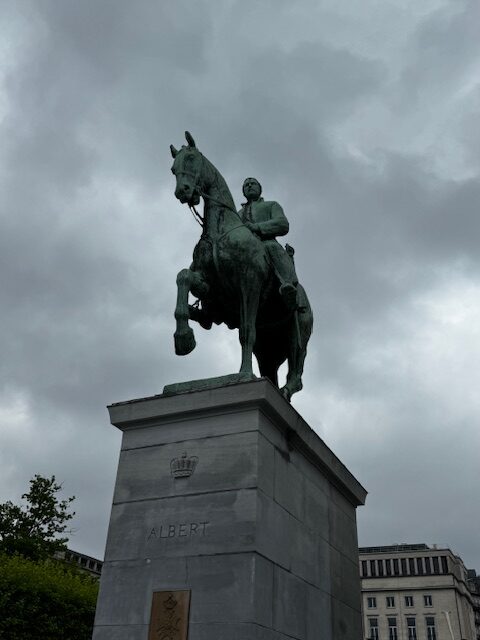
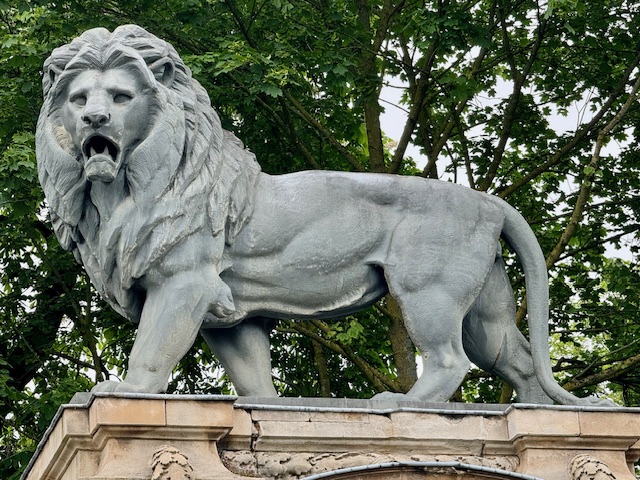
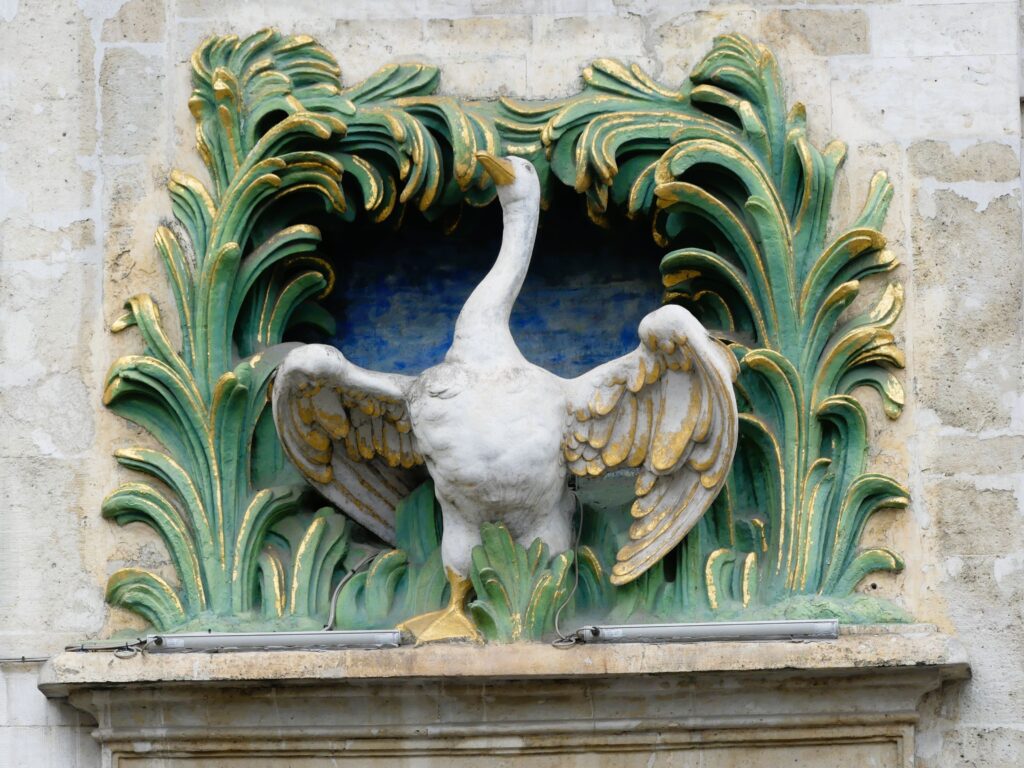
Brussels is a multicultural city, hosting numerous international institutions, organizations, and embassies. It’s also renowned for its delicious cuisine, particularly chocolates, waffles, mussels and beer … please note that the key word in this paragraph is chocolate.
Throughout one’s life, you read and see documentaries about famous places, artwork, sites, etc., and sometimes, when seen in real life they can disappoint. I’m looking at you, Mount Rushmore and the Trevi Fountain! My first-time seeing Brussels’ most famous landmark, the Peggy Lee song immediately came to mind, “Is That All There Is?”
Manneken Pis (Dutch for “little man who urinates”) is a main tourist attraction and symbol of the city and the independent spirit of its inhabitants. It’s a small, bronze statue of a naked little boy urinating in a fountain basin. The statue dates back to the early 17th century and has several legends surrounding its origin.
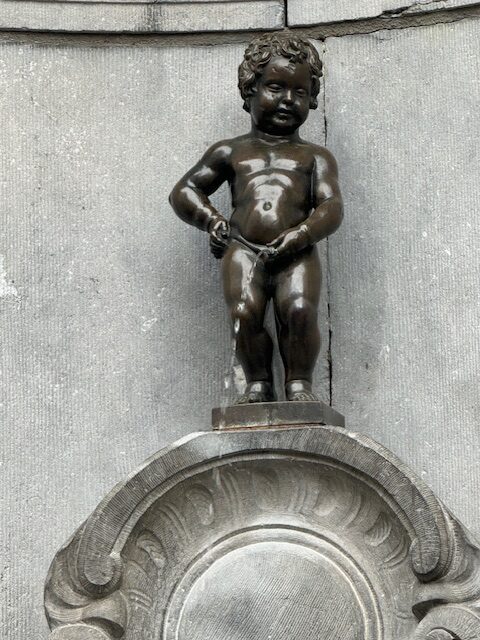
But here’s my favorite on the “the little hero,” according to this tale … it was during a siege in the 14th century, enemy forces planned to blow-up the city walls using explosives. The young boy, who discovered the fuse, extinguished it by urinating on it, thus saving the city from destruction. In gratitude, the citizens of Brussels erected the statue to honor their little hero. He’s surely a “pissa!”
The humorous and cheeky nature of the statue may simply reflect the quirky, playful spirit of the people of Brussels. It’s become the perfect place for Instagramers and the like; to me: meh.
The Grand Place, or Grote Markt, is the central square of Brussels and one of the most iconic landmarks in the city. The Grote Markt is surrounded by beautiful, ornate guildhalls, many of which date back to the 1600s.
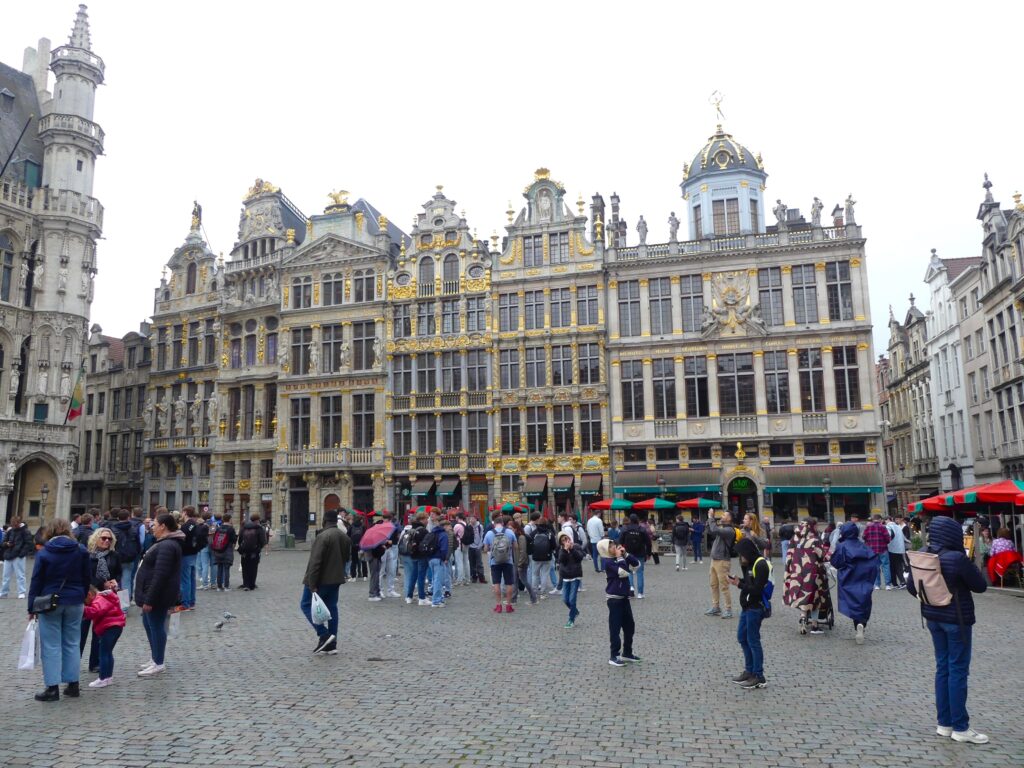

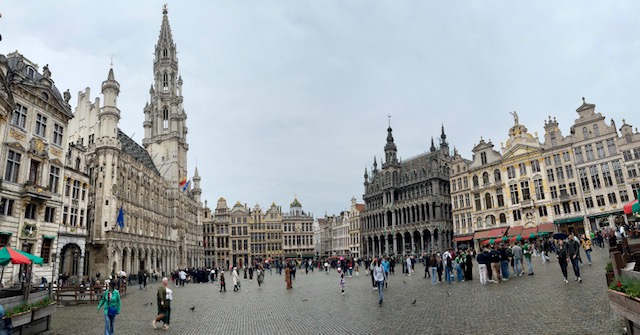
These fanciful guildhalls showcase a variety of architectural styles: Gothic, Baroque and Renaissance. While the buildings are not entirely gilded in gold, they’re adorned with intricate decorations and sculptures, making the square a stunning, remarkable sight. It’s 360 degrees of visual delight.
Back to the business of chocolate and Belgium and Brussels. Chocolate shops sprout about like tulips in Holland – they’re everywhere! One cannot walk a single block without encountering a fancy chocolate purveyor or two.
The Les Galeries Royales Saint Hubert is chock full of them. All the major luxury brands are represented within its grandiose glass-enclosed atrium that officially opened in 1847. David dilly-dallied along the galleries, making multiple window shopping stops and gawking at the wares within, such as …

Godiva, THE global, luxury chocolate brand, Leonidas Chocolates, Pierre Marcolini – renowned for his artisanal chocolates. Wittamer is a double-threat known for its luxurious chocolates and pastries. Mary Chocolatier, since 1919, and other local brands.
Neuhaus: Founded in 1857, Neuhaus is one of the oldest chocolate shops in Brussels and is credited with inventing the praline. Here’s where David made a beeline into the shop to buy some premium, delicious chocolates. Neuhaus harks back to his selling days behind the chocolates counter at I. Magnin in San Francisco’s Union Square. He knows his stuff!
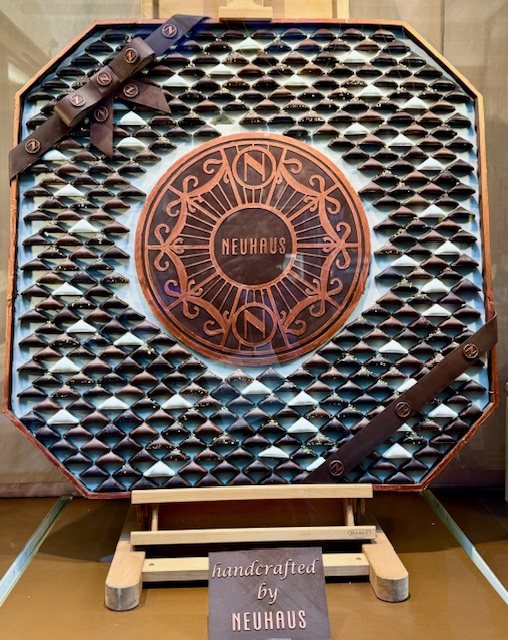
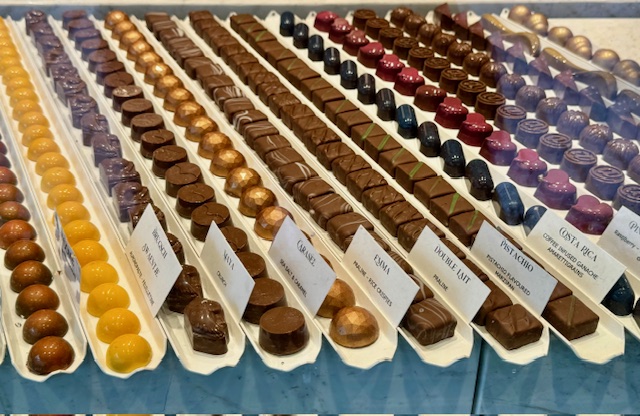
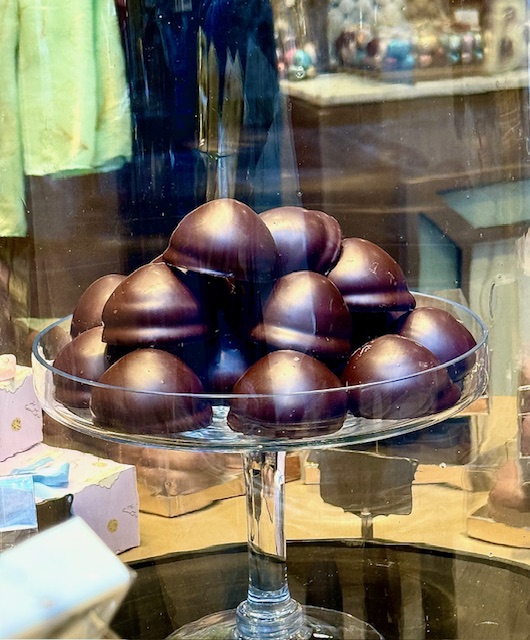

But with all the fine chocolatiers of Brussels and beyond, our favorite will be found in Bruges … more on that later.
The Royal Palace of Brussels serves as the official palace of the King and Queen of the Belgians. However, it’s not used as a royal residence in the traditional sense, as the monarchs reside in the Royal Castle of Laeken, located just outside Brussels.
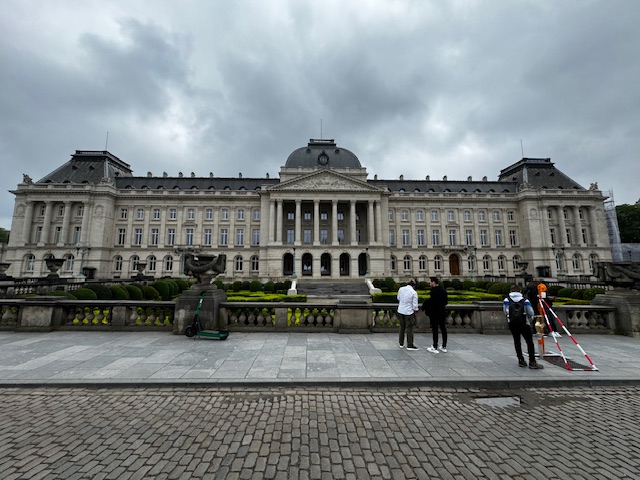
The Parc du Cinquantenaire, or Cinquantenaire Park, is a vast and prominent green space located in the heart of Brussels; renowned for its gardens, picturesque walking paths, monuments and museums.
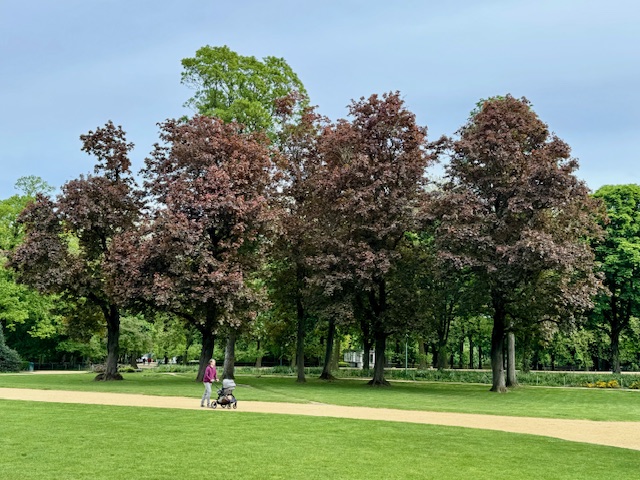

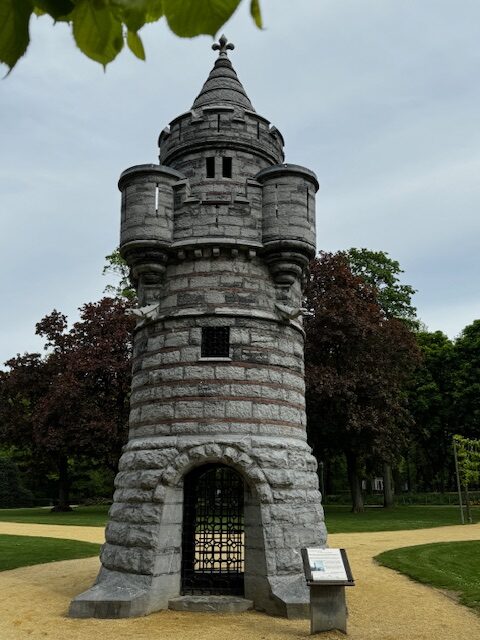
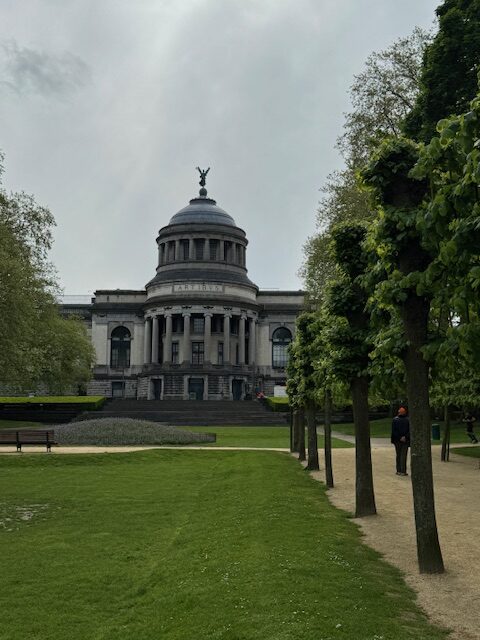
The Triumphal Arch is one of the most striking, iconic landmarks within the park, with its three arches. It was constructed in the late 19th century to commemorate Belgium’s 50th anniversary of independence.

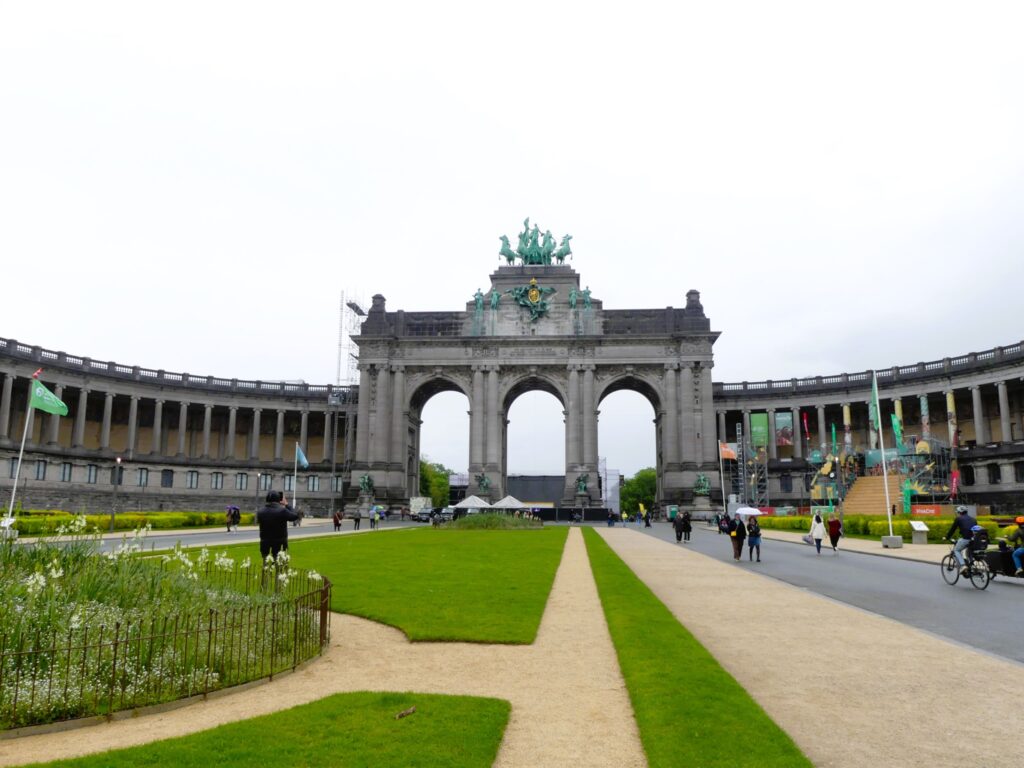
Being quite windy and raining, the museums enticed us into a remarkable world of culture and the arts: the Cinquantenaire Museum (Royal Museum of Art and History) and Autoworld.
The Art and History Museum has astounding collections that cover various periods and civilizations from throughout the world. It pleasantly surprised us with its extensive treasures found in every gallery. It reminded us once again how the riches of the Dutch merchant trade that we first experienced in Amsterdam continued into Belgium. Remember – the Dutch and Belgians were formerly united.


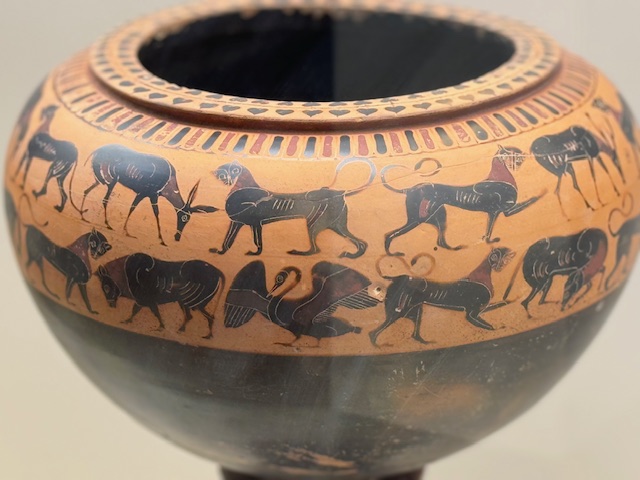




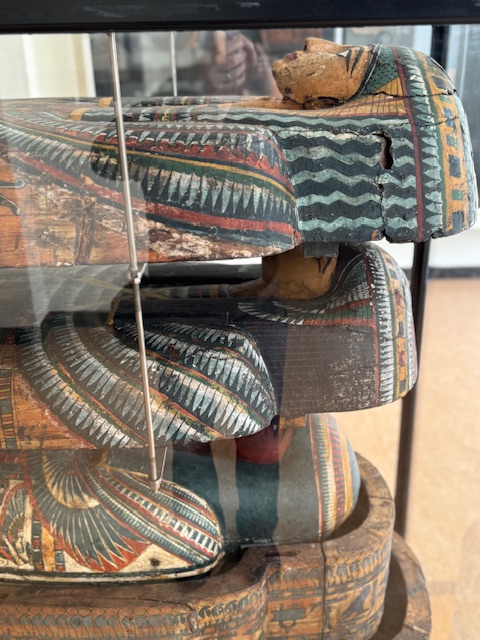
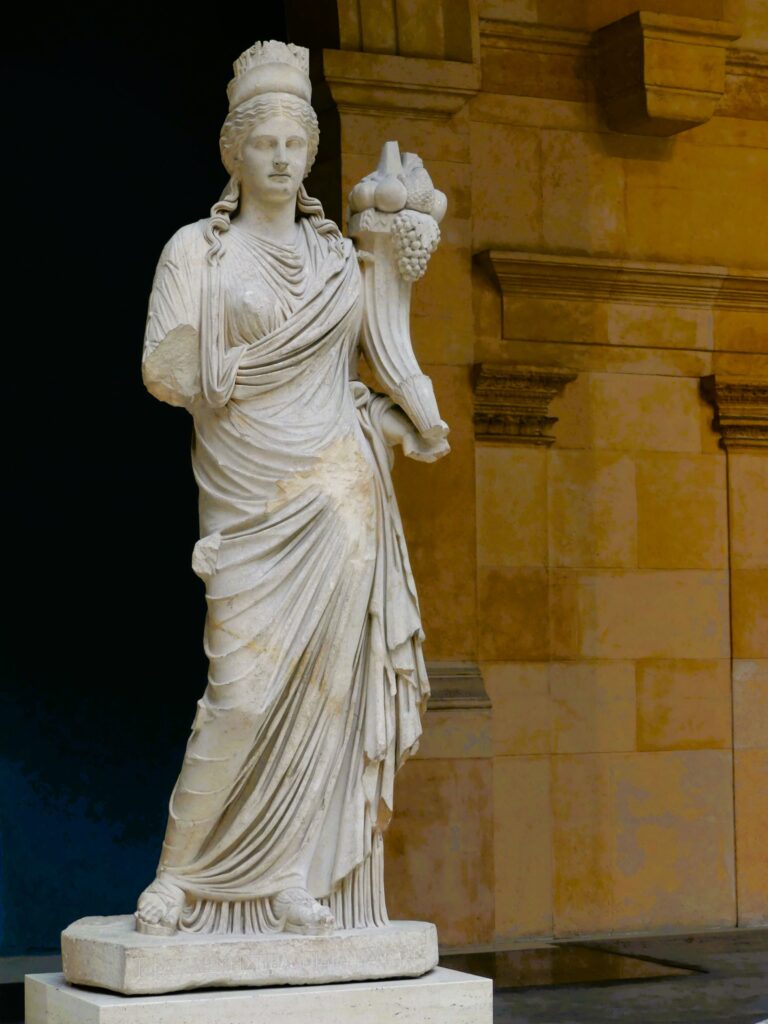


Here we discovered ancient Egyptian mummies, medieval tapestries, weaponry and armor, Asian Buddhas, African masks and sculpture, pre-Columbian statues, Alaskan art; plus the magnificent collection of Belgian Art Nouveau and other European decorative arts and archaeological finds, etc. There’s even a Heart Museum within its walls.
There’s enough fine examples of Flemish tapestry in the museum’s extensive collection to cover a football field or two. Look closely and discover royal life in all its exquisite detail.
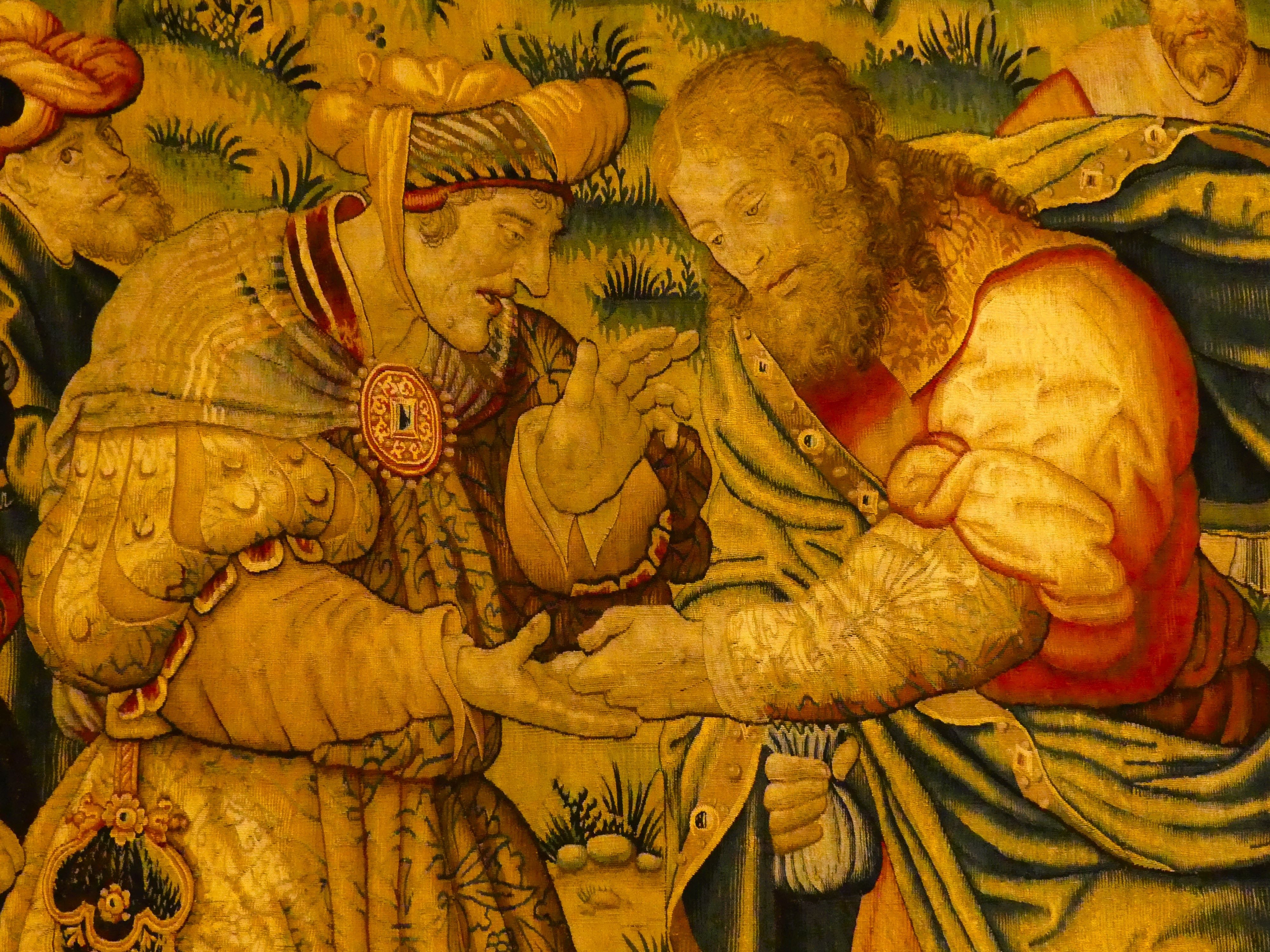

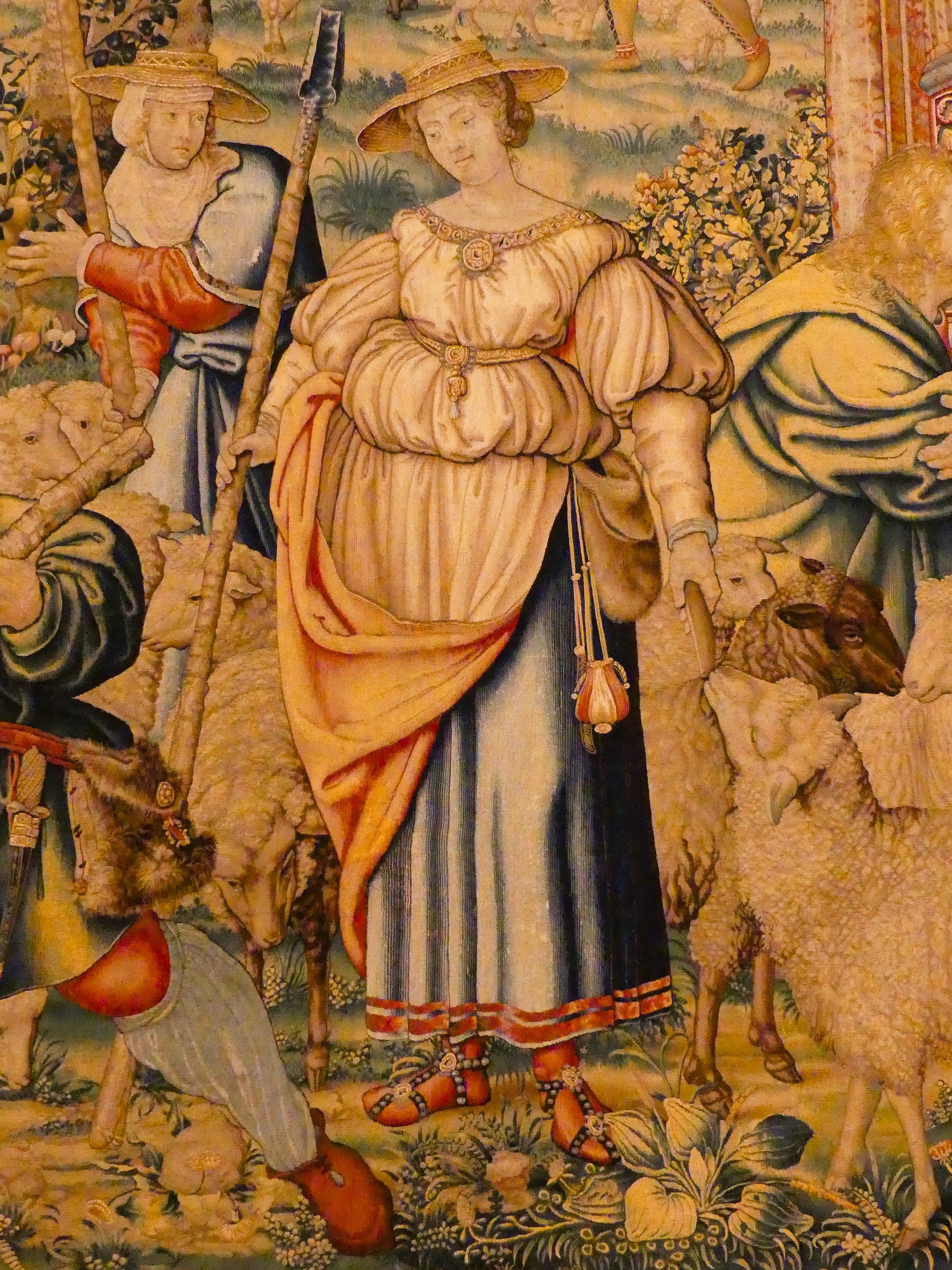
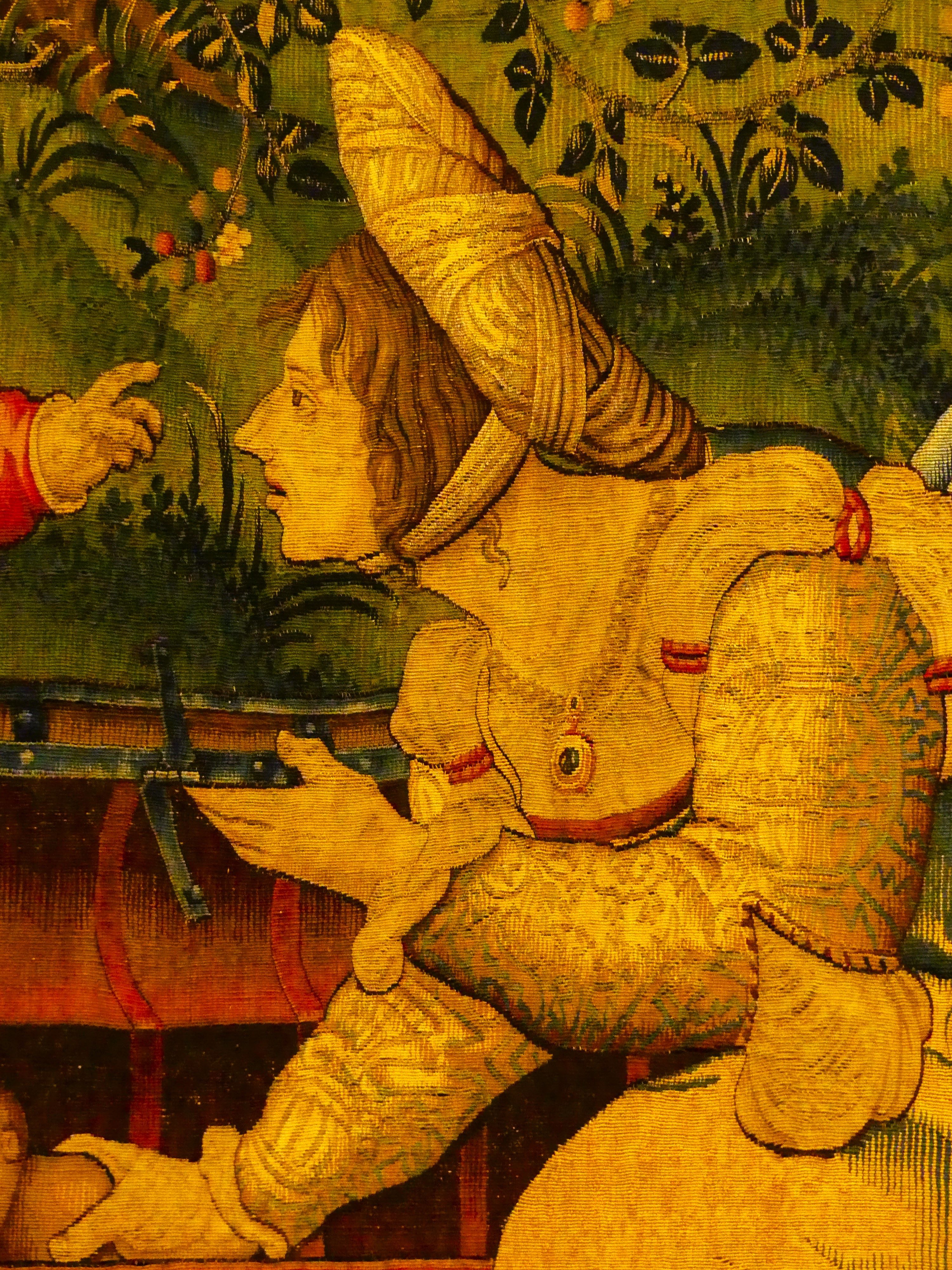
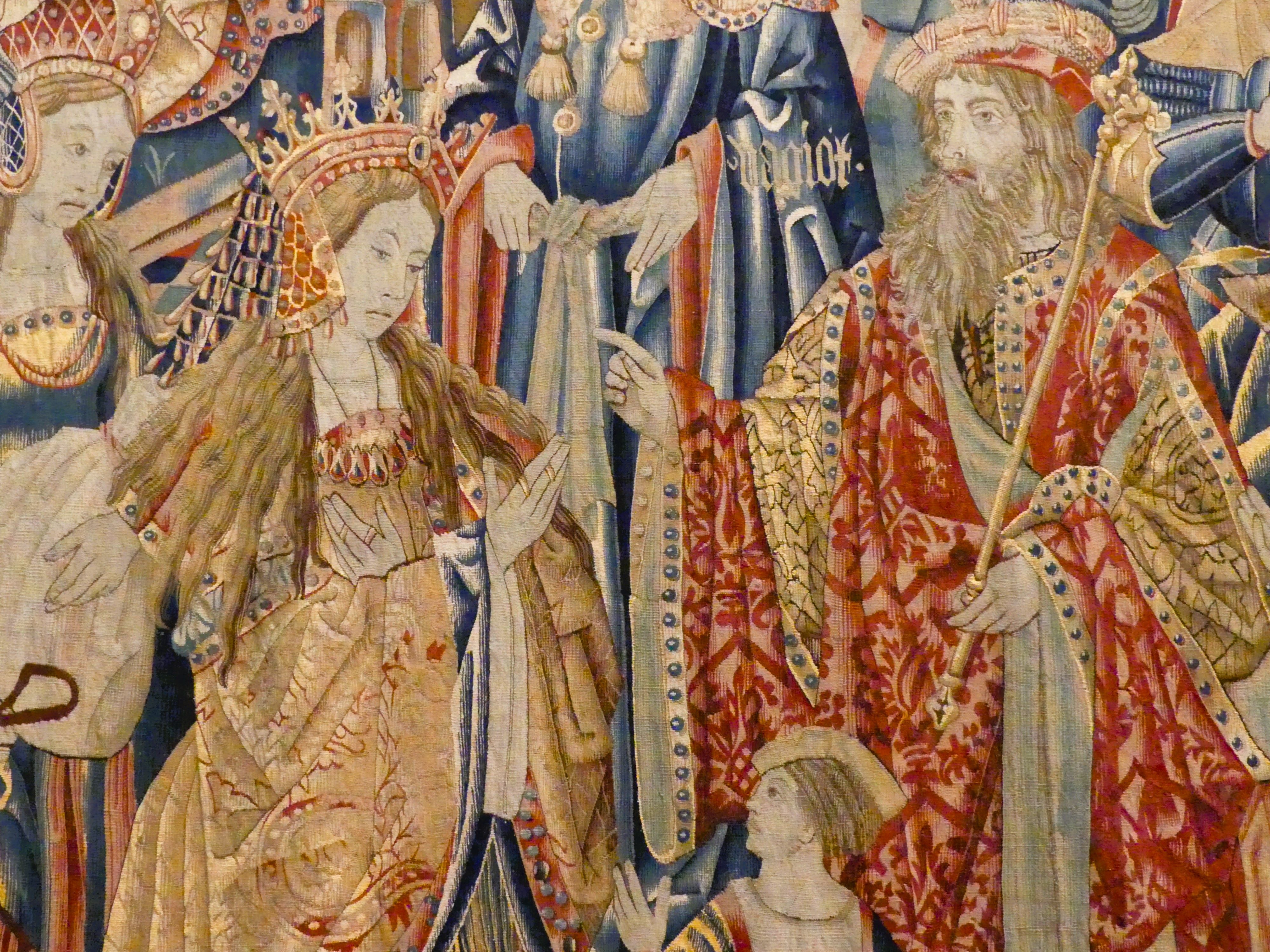
Interestingly, it surprised us how the museum’s corridors were fairly empty. Walking about, we encountered very few people. On later thought, it may have been due to the lack of descriptive translations; for none were in English, only in French. C’est la vie.


One of my favorite rooms at the museum was the extraordinary collections of Retablos; particularly those from Latin America. Retablos are small, devotional paintings or sculptures that depict religious scenes or figures, often housed in ornate frames. In México, there’s a strong tradition of the folk retablo with its popular, religious imagery.


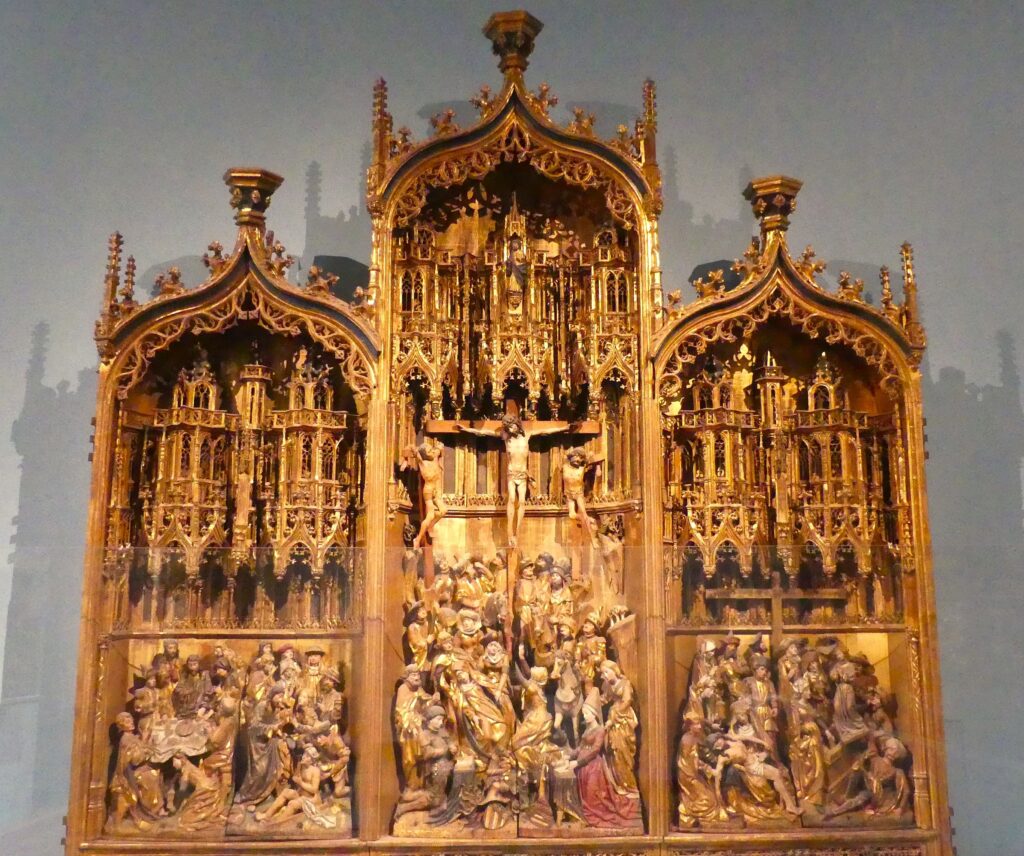
(Frida Kahlo and Diego Rivera had a love of retablos and owned around 2,000 of them in their Blue House, Casa Azul, in Mexico City; some of which are on display there.)
Suddenly, we’d happen upon a large, magnificent space revealing ancient Roman mosaics. It was thrilling to see them “in situ,” or on site; for these were discovered here from a remarkable archaeological find just beneath the Parc du Cinquantenaire. In 1873, while construction work was underway for the park, workers uncovered the remains of a vast Roman villa dating back to the third-century AD. Those Romans sure did get around.
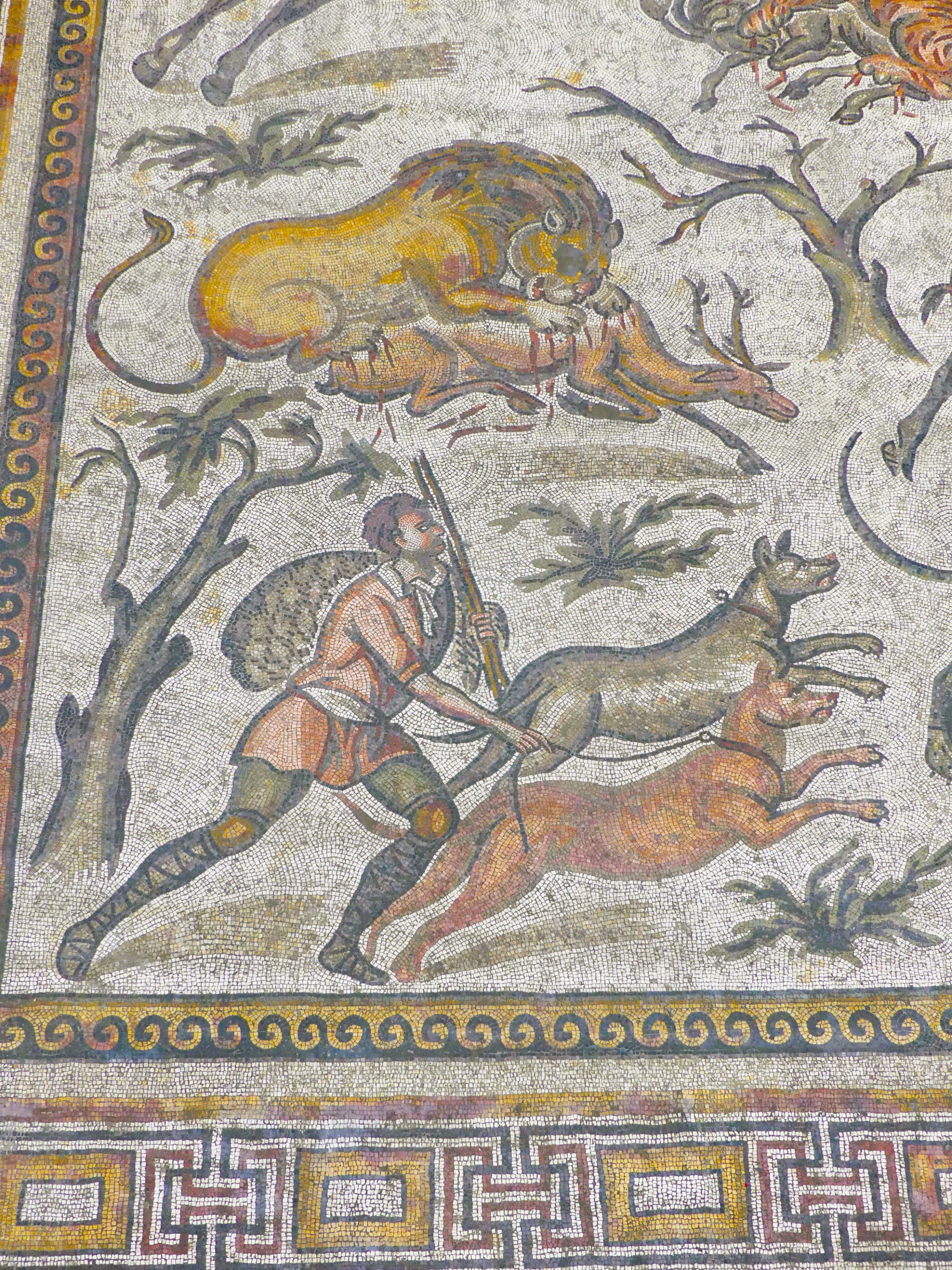
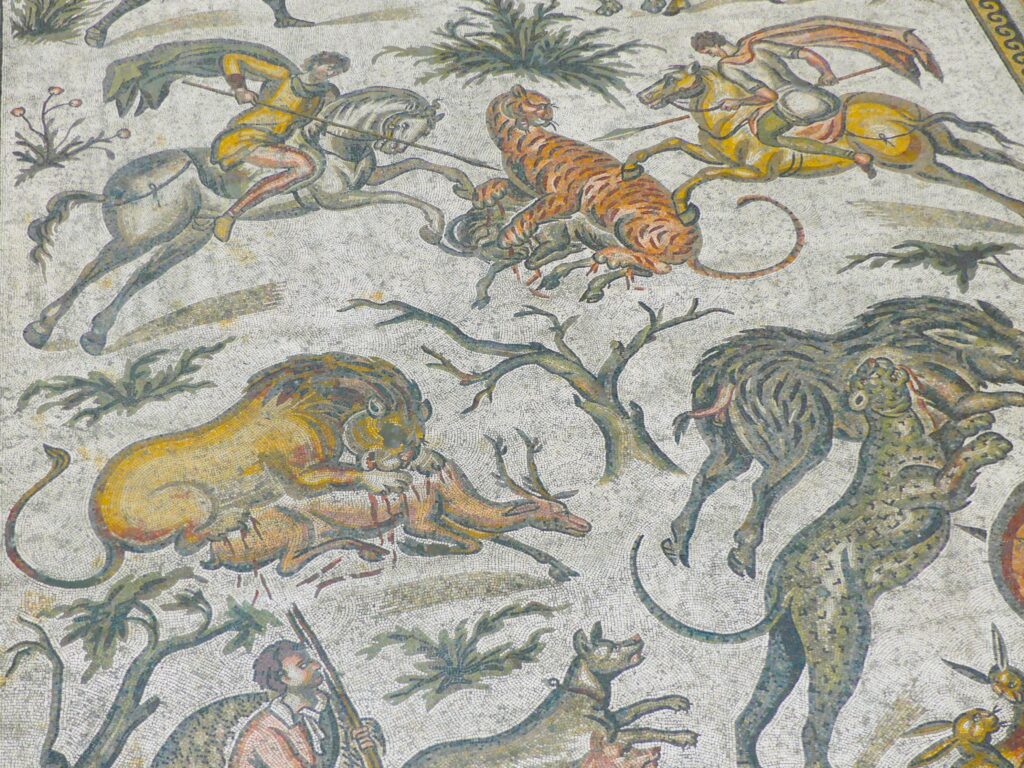
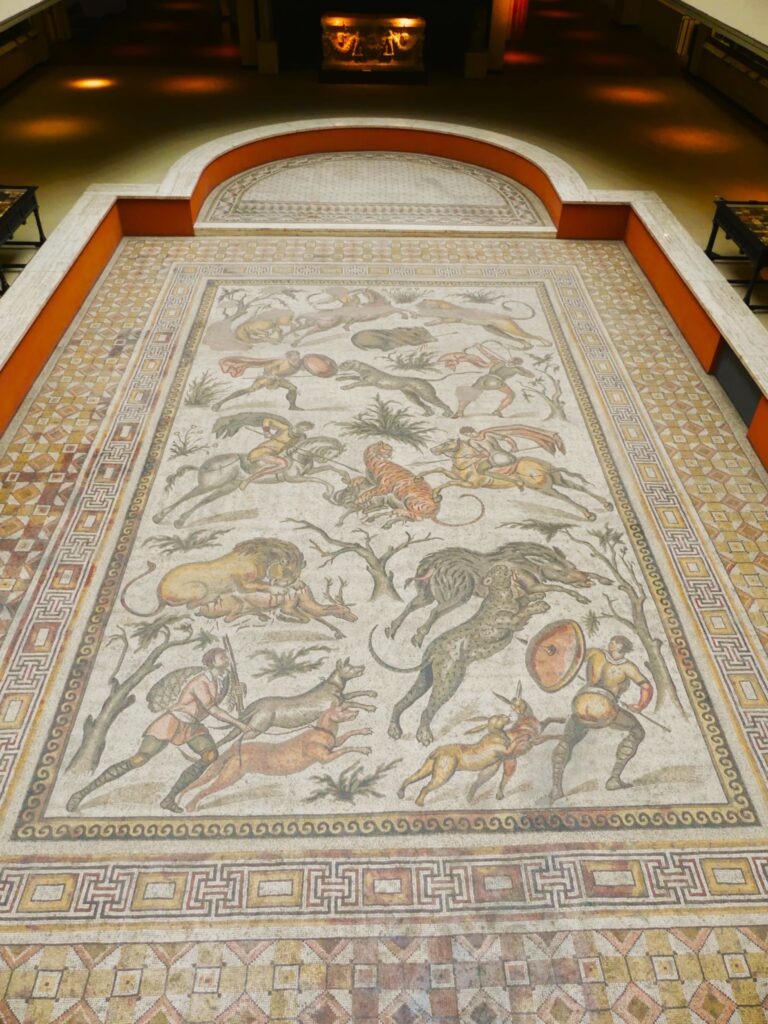
Among their discoveries, an exceptionally large and well-preserved mosaic floor, measuring about thirty-five meters (115 feet) in length, known as the “Mosaic of Bacchus.”
The discovery of these giant Roman mosaics provided valuable insights into the Roman presence in ancient Brussels (then known as “Beech Forest”).
Going from the ancient world to the modern, the nearby Autoworld is in a cavernous, historic building that houses an impressive, permanent collection of over 300 vintage classics, racing, luxury, concept and prototype automobiles; spanning over a century of automotive history. Many of them were new to me, being exclusively European-marketed only.

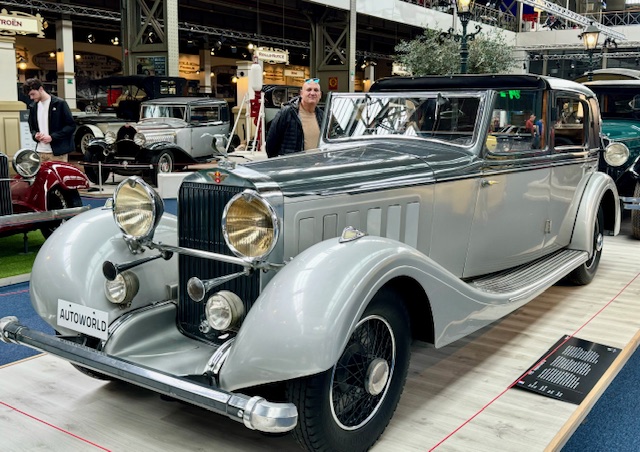

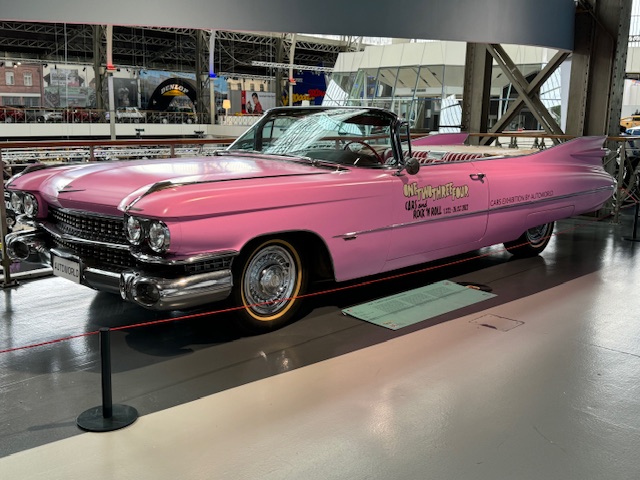
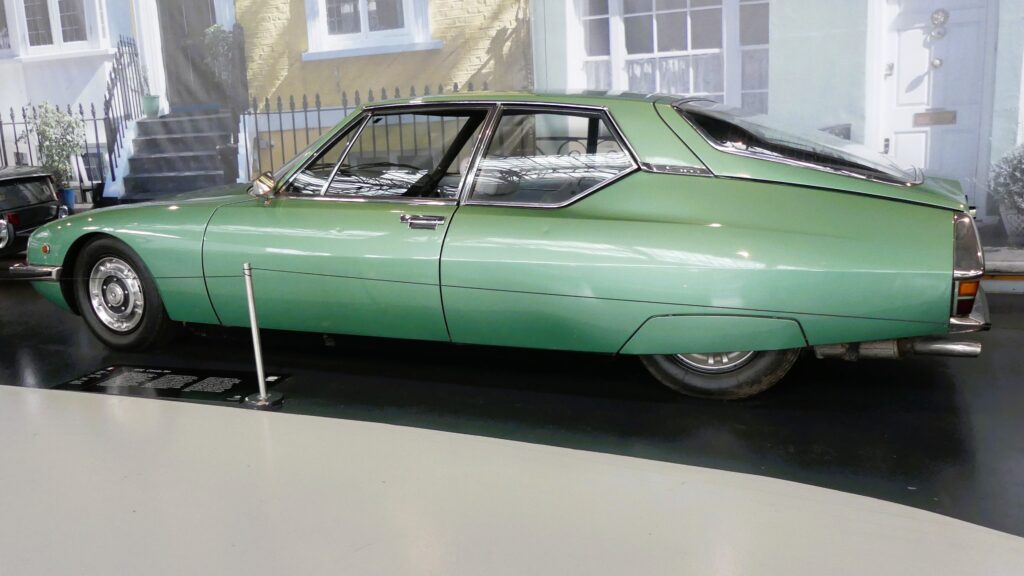
“Ford Mustang 60 Years – Celebrating the Golden Sixties,” is a timely and special, temporary exhibit of the iconic Mustang since its unveiling in 1964 at the World’s Fair in NYC (which David attended). Every year-change model was represented, with some exclusive vehicles on display. Crowds excitedly gathered around the beautiful Pony Cars.




You don’t have to love cars to enjoy Autoworld. It offers a fun exploration through automotive history; showcasing vehicles that will appeal to any car enthusiast or even to those who just like to ride in cars.
Here now is David’s further spiel on French Fries vs. Belgian Frites and his Eureka Moment. A short stroll from the museums is “Maison Antoine,” opened in 1948 and reputed to be the best Pomme Frites in Belgium … with its cult following and almost mythical distinction.
The proof? How else would you explain standing in line (there’s two of them) under a light rain for a half-hour just for a paper cone full of fresh, hot frites? And the consensus? THE BEST EVER! As the Van Gogh Museum is the holy grail of the art world, Maison Antoine is the holy grail of frites. This simple stand double-fries the best batch you’ll ever taste. Fried twice, extra crispy – the four best words in world of fries.

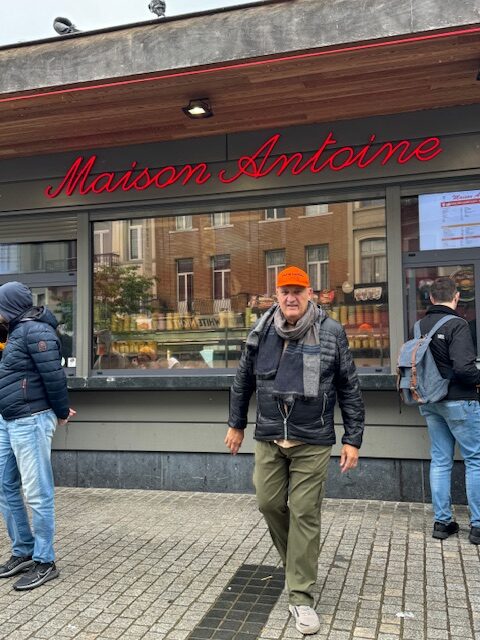
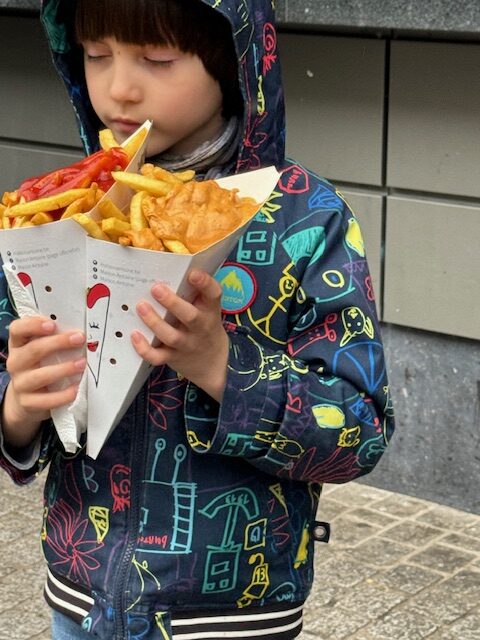
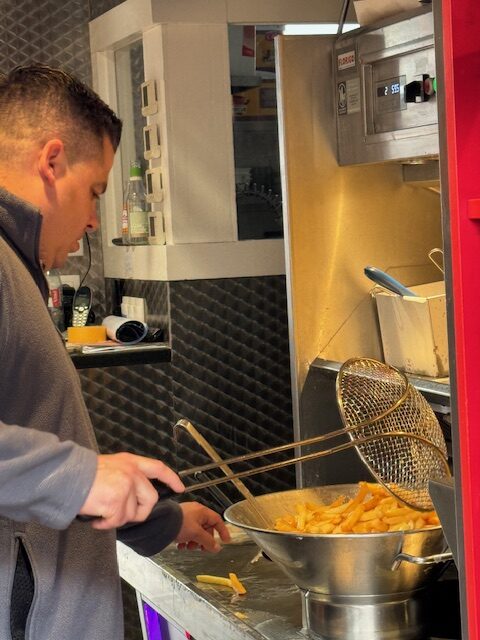
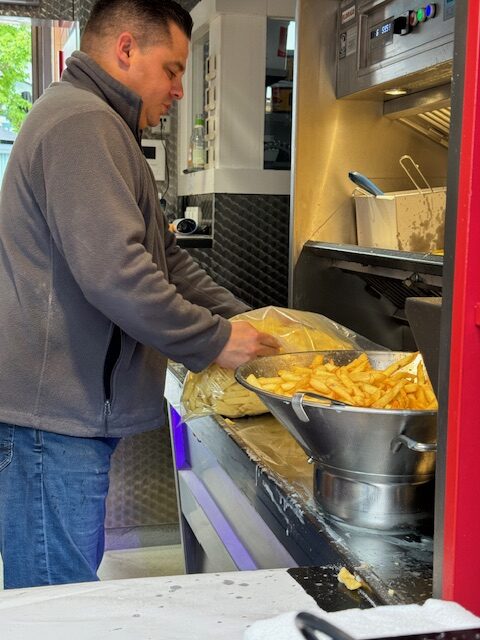
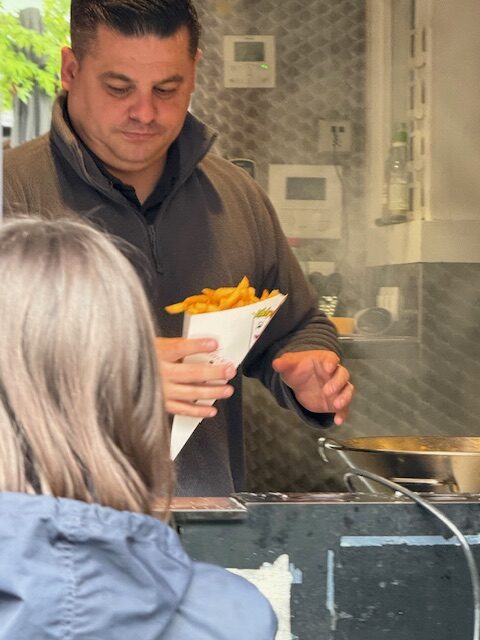
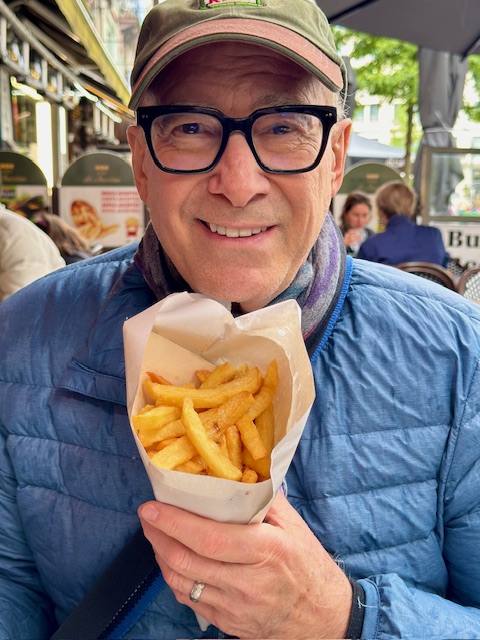
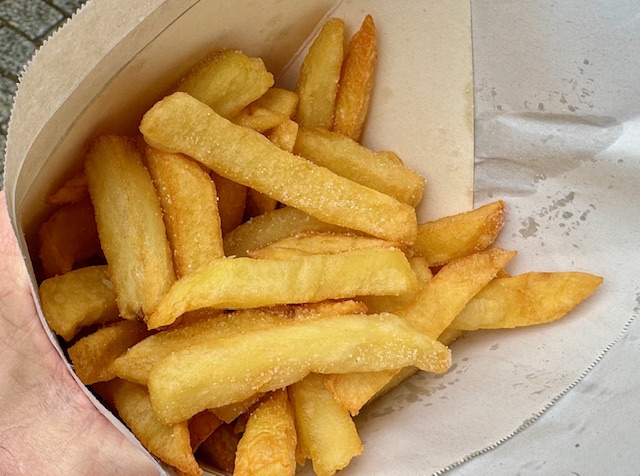
We each chose the Petite Frite @ 3.50 Euros (about $3.75) – a bargain for their generous portion. For one Euro more, you choose a sauce to accompany your frites. The surrounding restaurants in the Place Jourdan allow anyone to be seated as long as you buy a drink. A cold Belgian Beer goes down really nicely with a side of hot frites. Salud! Cheers! À ta santé!
To sum up, a best-case scenario would be to ride the Eurostar from Amsterdam to Brussels in a day. Grab hold of crispy, hot frites when Mannekenpis opens at 10am and then hop on the 10:25 train at the nearby Centraal Station (it’s a five-minute walk). Grab a taxi or Uber in Brussels and eight minutes later, arrive at Maison Antoine and the challenge to decide which wins the Pommes Frites war!
Bruges, Belgium
It takes an hour’s train ride from Brussels to the picturesque medieval city of Bruges; world famous for its well-preserved architecture and canals. It’s often referred to as the “Venice of the North.” The historic center of Bruges is a UNESCO World Heritage Site. No new construction is allowed in this area, thus retaining its historic charm. The popular 2008 film, “In Bruges” brought the city to light to a broader audience. We hopped onto a minibus for a quick introductory 45-minute tour of the city’s highlights.
Its beautiful canals are what brings hordes to the city as they wind their way through the picturesque city center. They played a significant role in the city’s development as a medieval trading hub, facilitating transportation of goods and connecting Bruges to other cities in Europe.
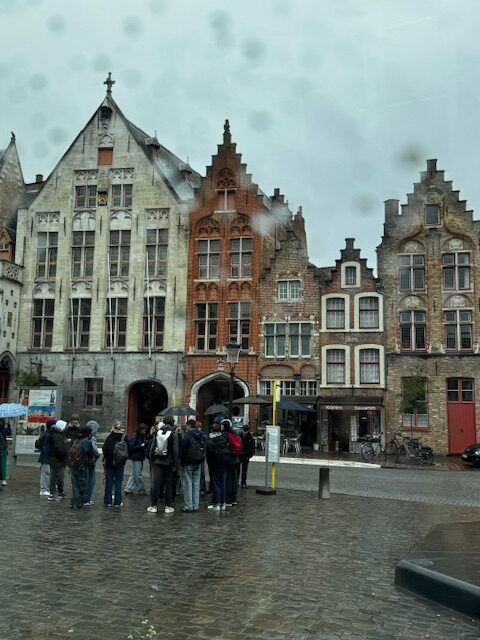
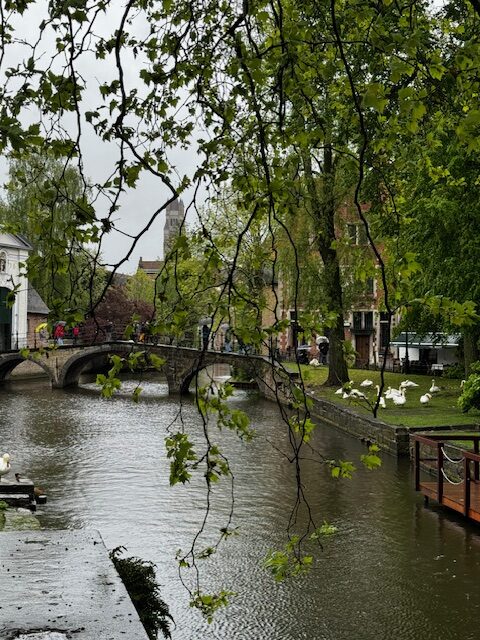
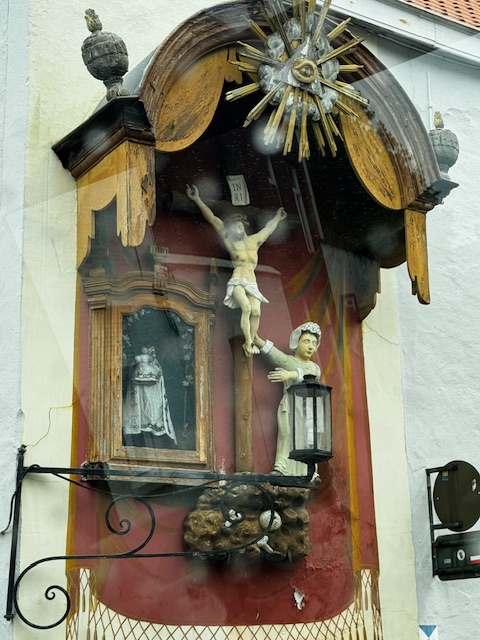
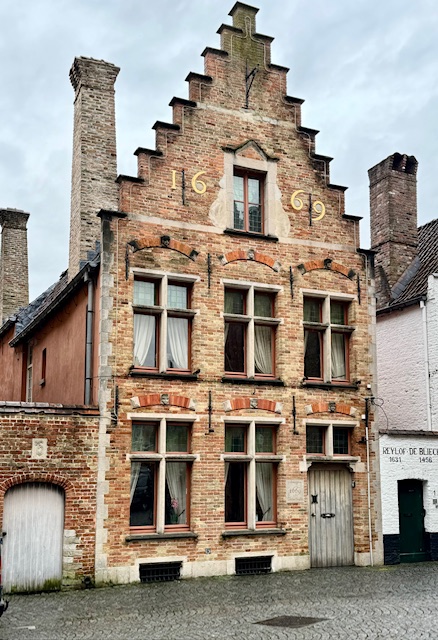
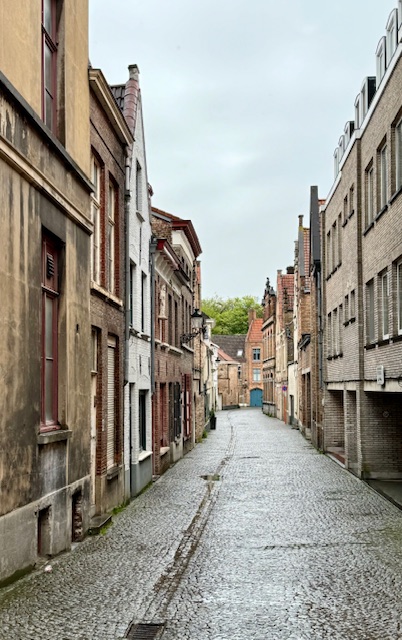
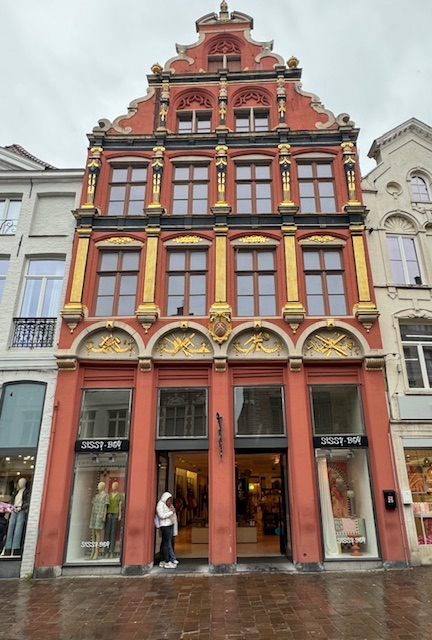
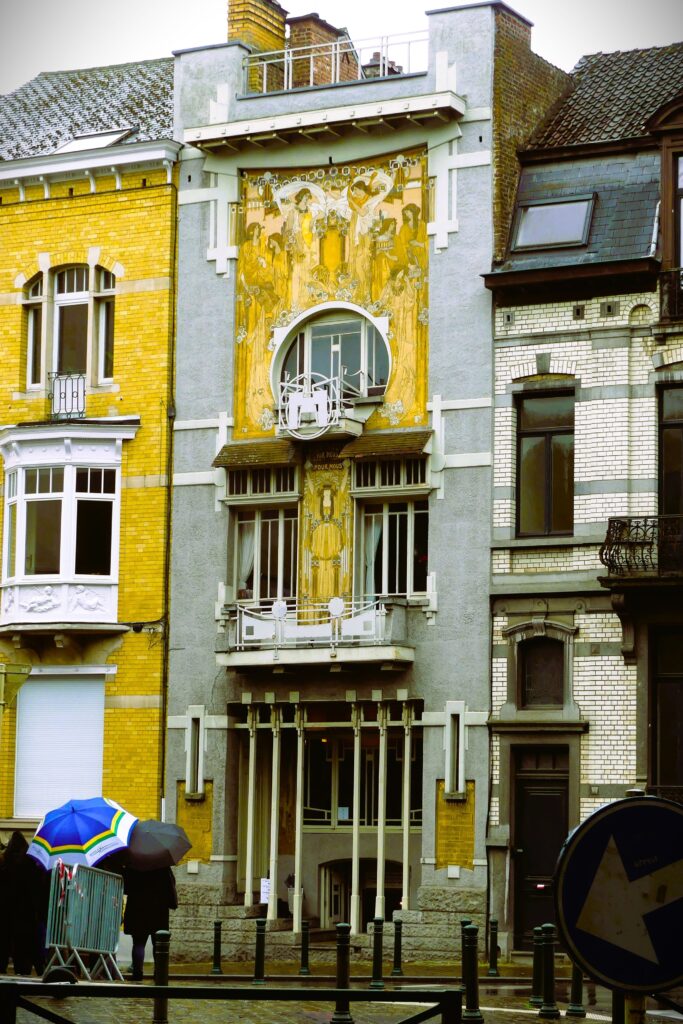
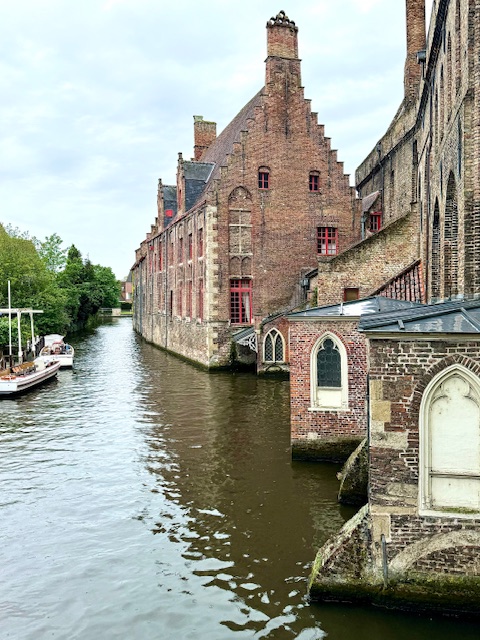
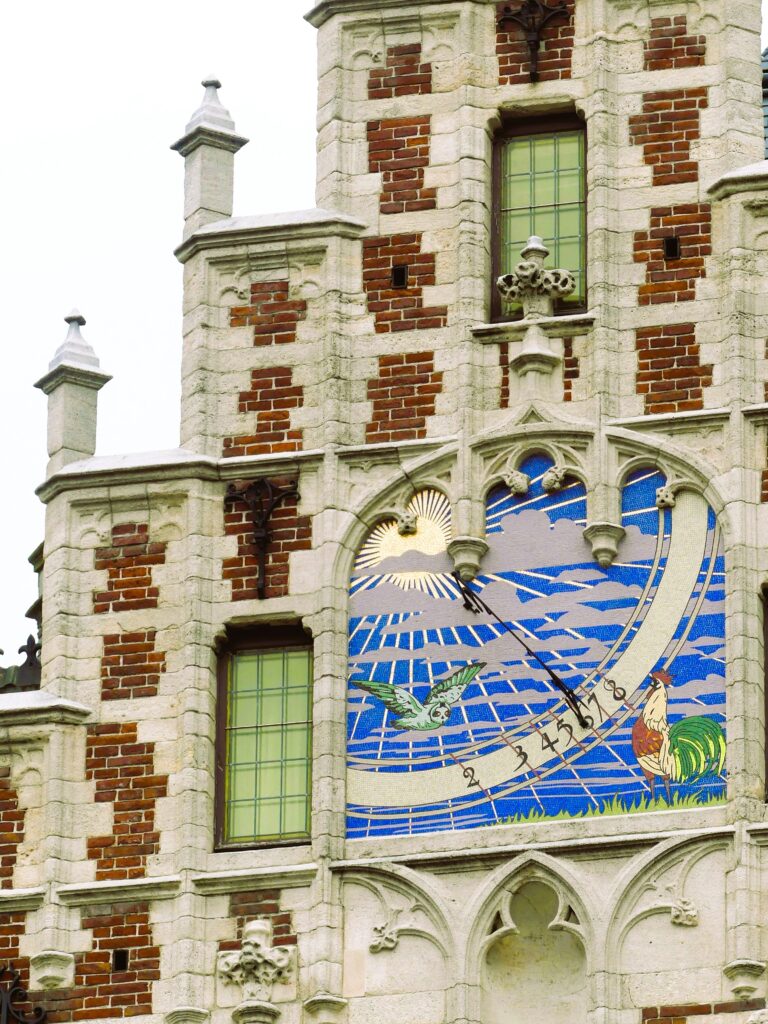
Throughout the city, its Gothic architecture thrives – buildings are adorned with intricate brickwork, showcasing the craftsmanship of medieval builders. The Belfry of Bruges is a prominent bell tower located in the heart of the city’s Market Square (Grote Markt), and is home to the city’s famous carillon and its 47 bells. It stands as a symbol of Bruges’ economic and political power during the Middle Ages.
The Gothic Church of Our Lady dominates the skyline with its towering brick spire, reaching a height of approximately 122 meters (400 feet), and making it one of the tallest brick structures in the world.
Inside the church, magnificent artistic treasures abound, including the exquisite marble sculpture of the “Madonna and Child” by Michelangelo. This masterpiece, known as the “Madonna of Bruges,” is one of the few Michelangelo sculptures to leave Italy during his lifetime.

Besides the Madonna, the church holds many other notable artworks, donated by its wealthy patrons; including a rich collection of paintings, sculptures, and religious artifacts. The interior reveals intricate stained-glass windows, ornate altars, and beautiful vaulted ceilings, all showcasing the sensational craftsmanship and artistry of the medieval period.
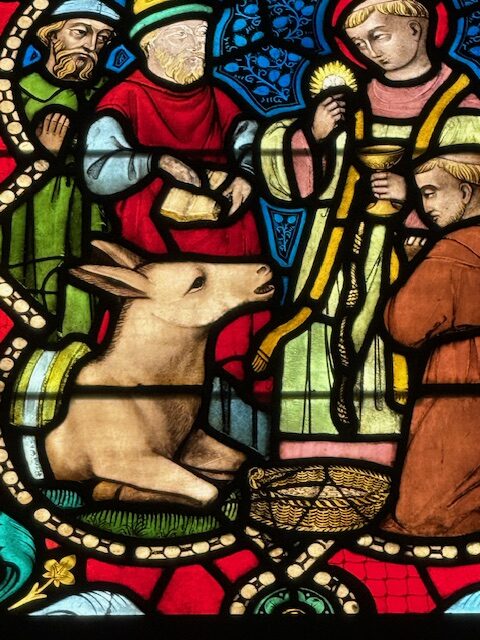
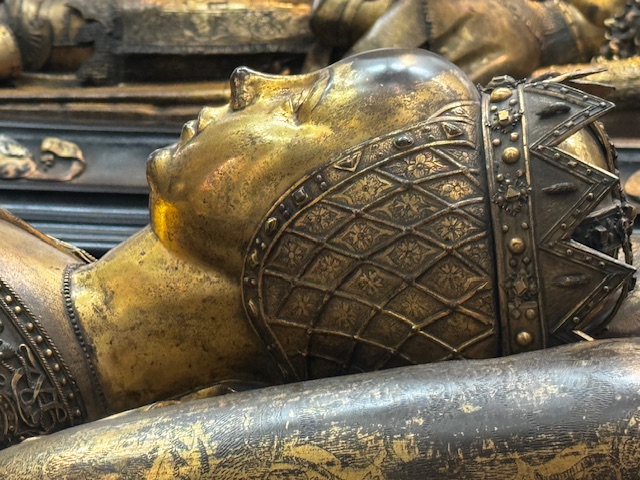
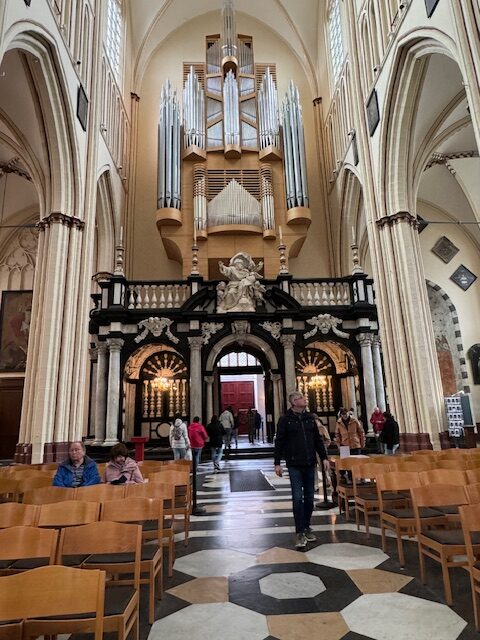
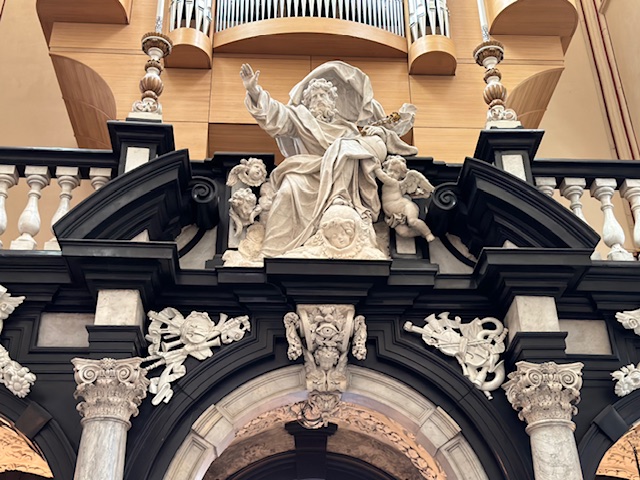
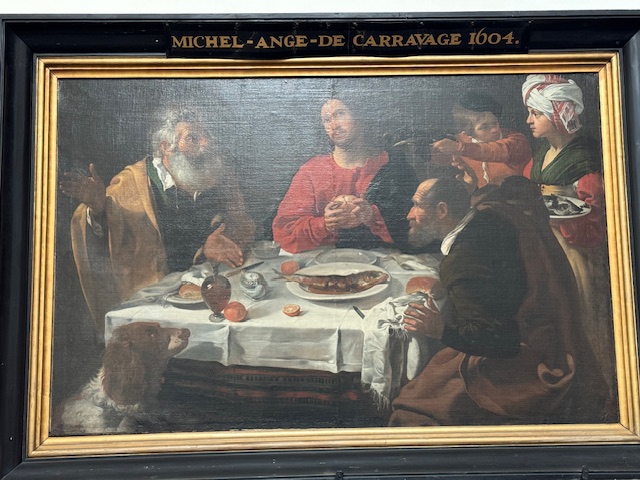
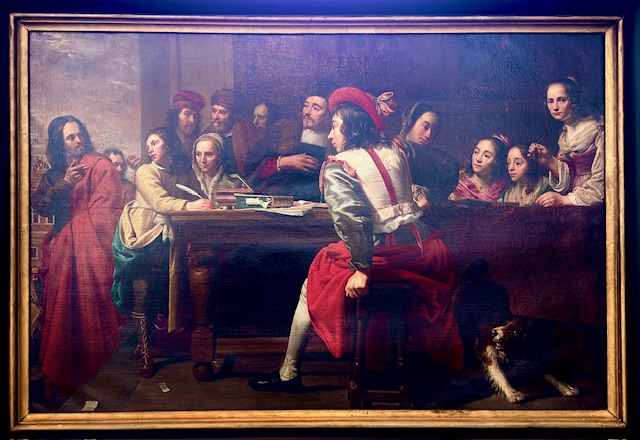
It was in Bruges that we came upon our third holy grail (Van Gogh Museum, pommes frites) – that of chocolate shops and in particular, Dumon Chocolatier, a tiny and unassuming shop, tucked away on a side street.
Founded in 1992 by chocolatier, Stephane Dumon, the chocolate emporium has gained a reputation for its exquisite chocolates, attracting both local and international visitors alike. Dumon Chocolatier offers a wide range of dreamy creations, including pralines filled with various ganaches, creams, and fruit flavors, as well as chocolate bars, truffles, and other confections. It seems as if every square inch is filled to the brim with anything and everything chocolates. Blink and you miss this or that sweet, delightful bonbon.



We indulged ourselves in a variety of delectable treats; most especially, those wonderful, dark chocolate-covered orange peel slices. They’re my absolute favorite. I should have purchased a case!
Leaving the shop with our dark riches, a sudden torrential downpour hit, and we found an inviting tearoom just around the corner, and boy! What a great find and perfect retreat.
De Proeverie Tea Room is a popular Bruges destination, known for its cozy ambiance and delicious selection of teas and chocolates. The tearoom is housed in a historic building, adding to its quaint charm and inviting atmosphere.
What I had in mind on this chilly, wet day was a steaming cup of hot chocolate. How it was served made for a most pleasant surprise … a hot cup of steaming milk, accompanied with a popsicle of dark chocolate; which you slowly swirl into your milk and watch it as it melts into a creamy, thick and rich cup of hot chocolate; all while releasing its tantalizing aroma.

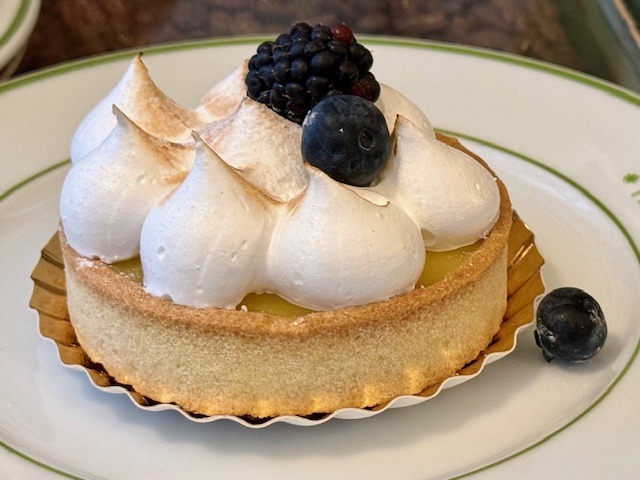
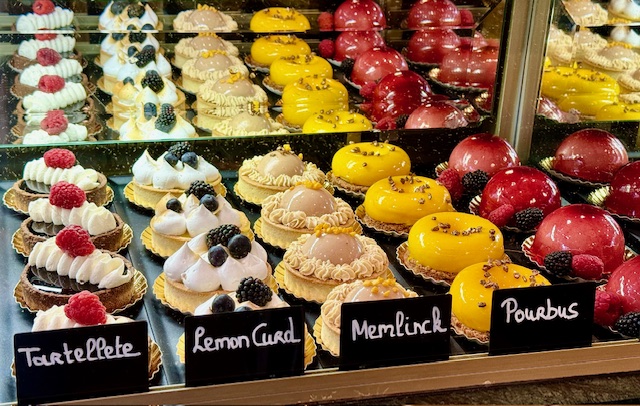
The first sip delights the senses, with velvety, smooth chocolate enveloping the palate and warming the soul. A lemon curd tart counterbalanced, and we were momentarily experiencing sublime nirvana. Sorry, Angelina of Paris, but I’ve just dethroned you from the hot chocolate center of the universe – your velvety, thick, hot chocolate just met its match in Bruges! The Tea Room made for a fabulous ending and goodbye to Bruges.
As seen on the streets…..
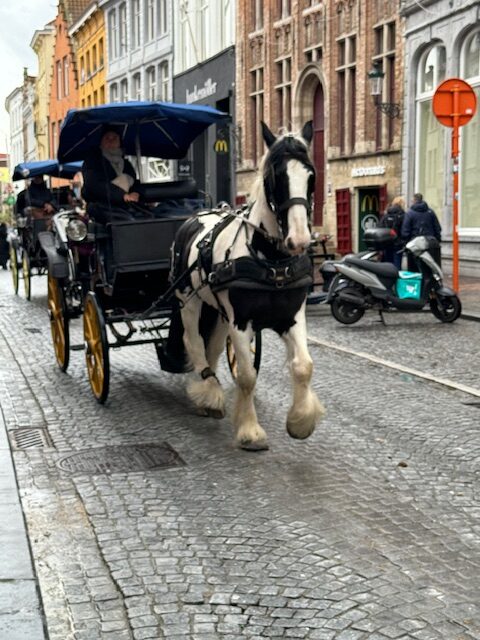


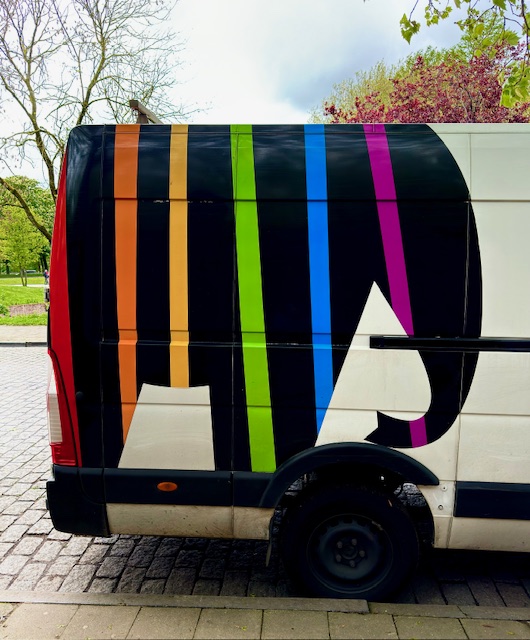
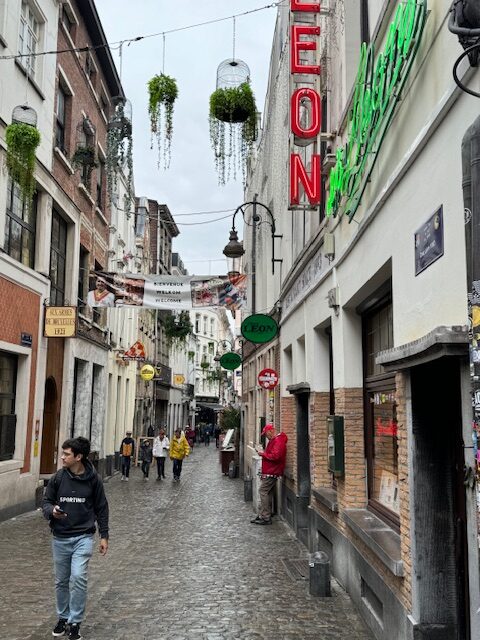
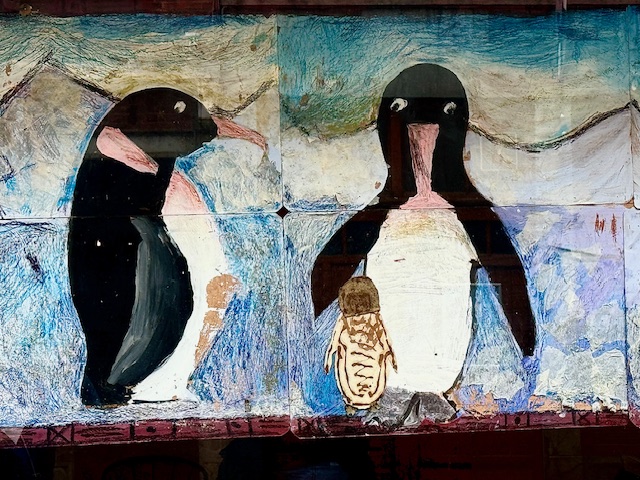
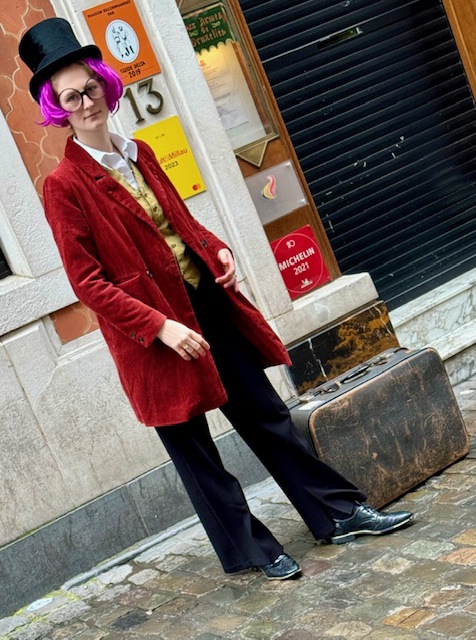
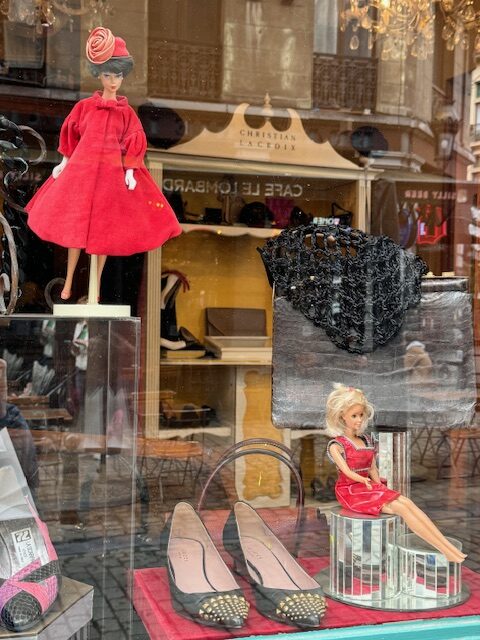
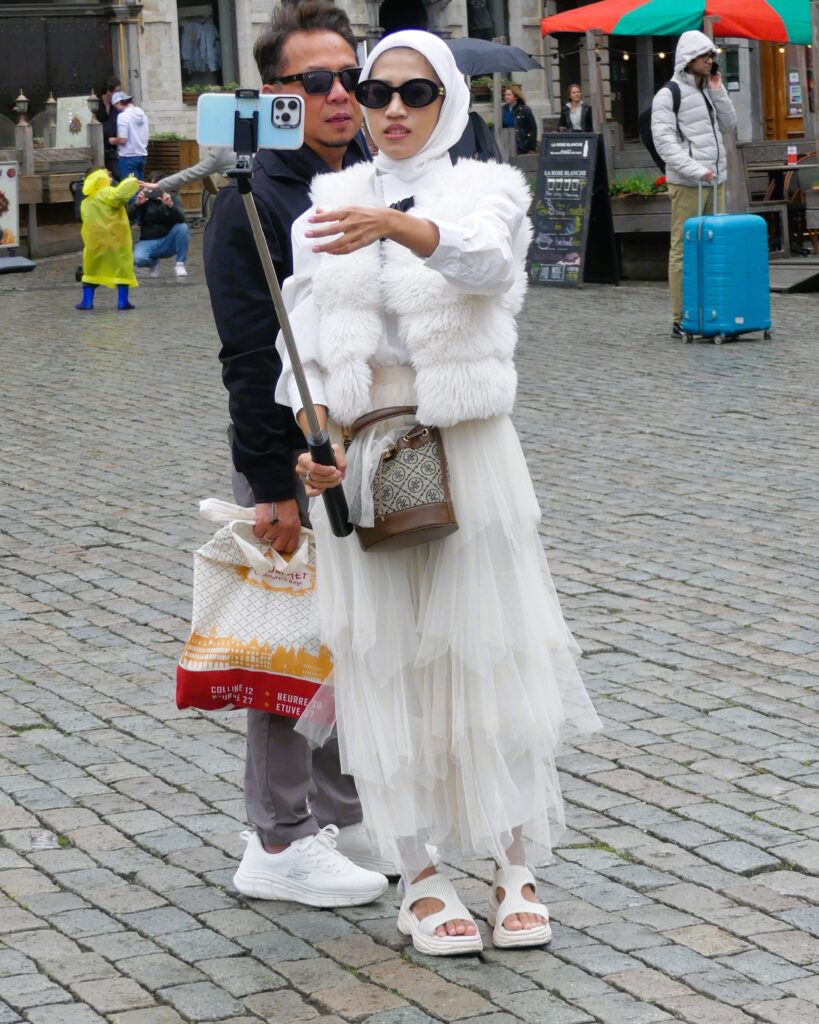
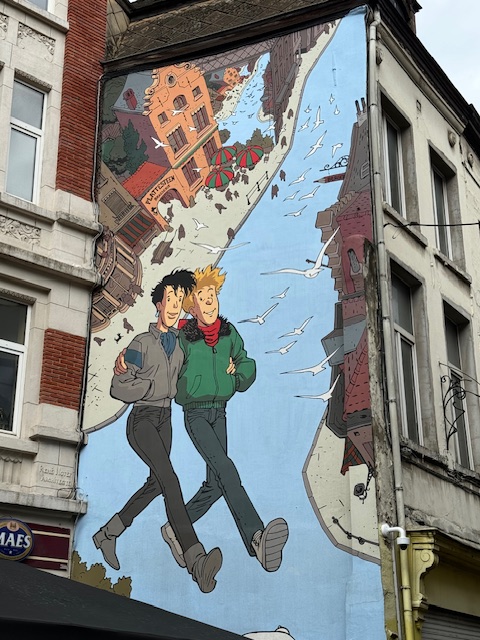
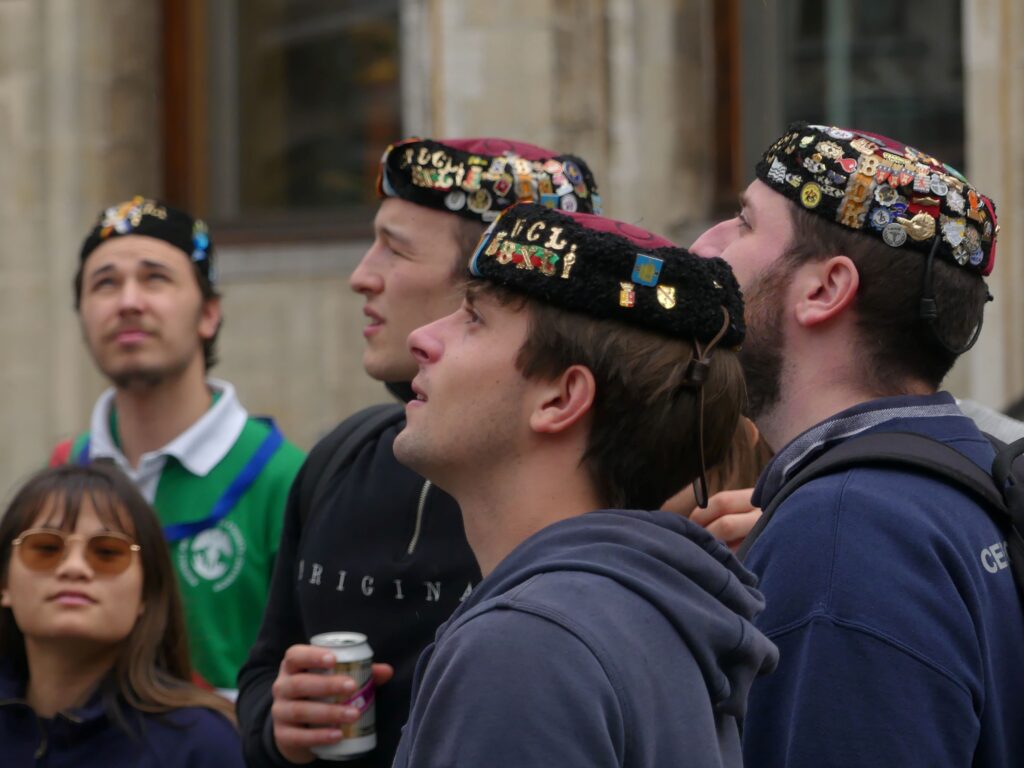
Food….
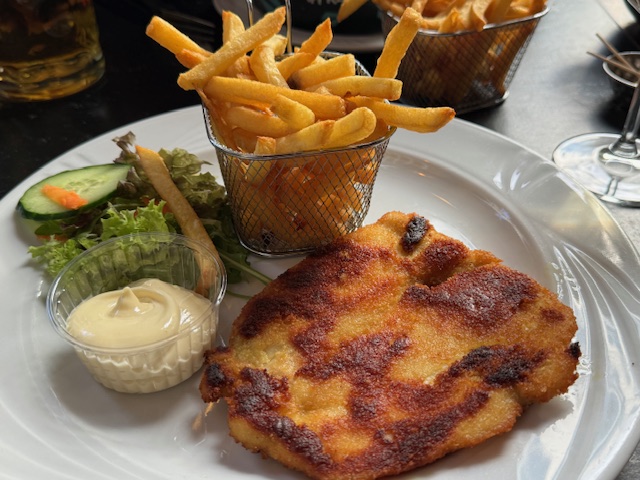
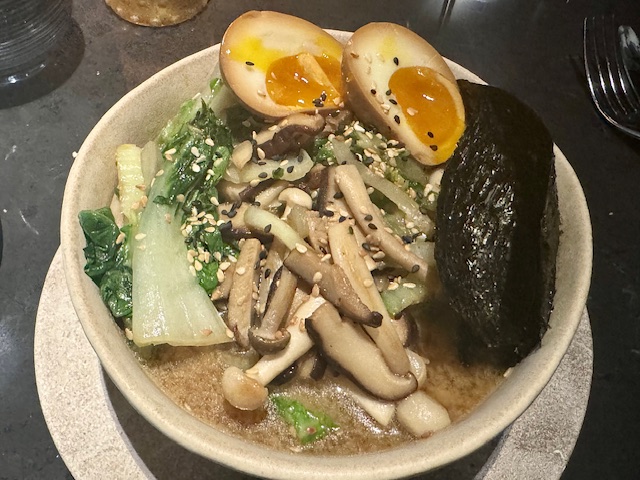
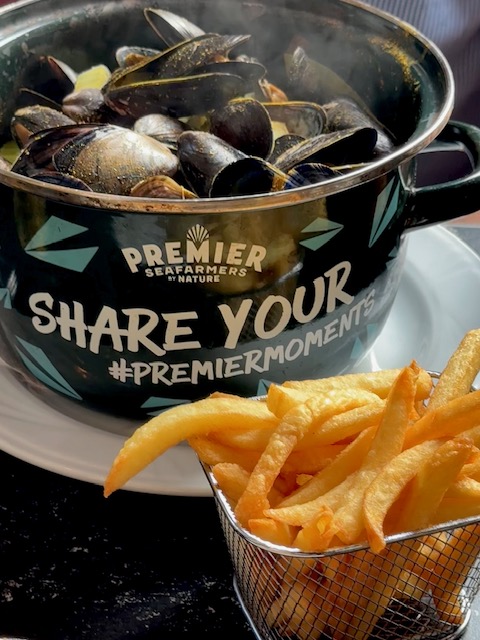
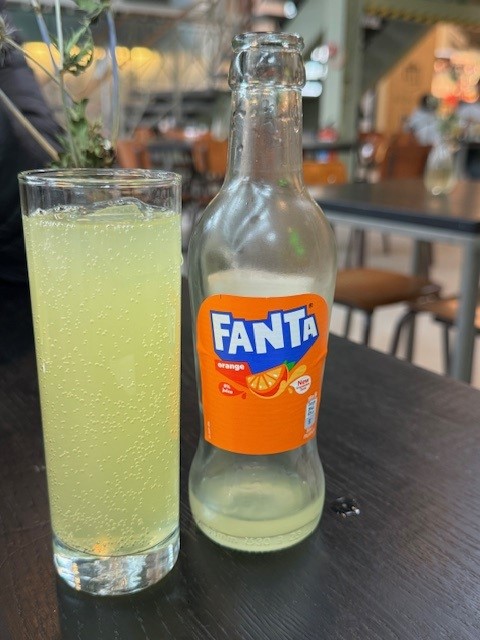
Tomorrow: taxi, train, bus, train, bus, taxi … it’s complicated.
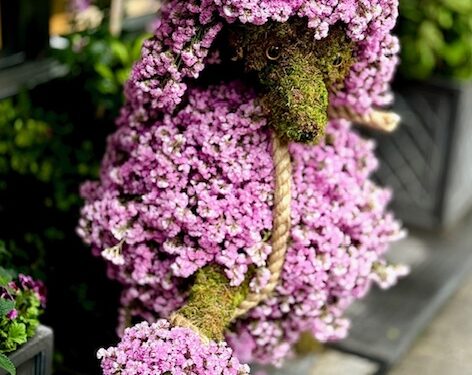
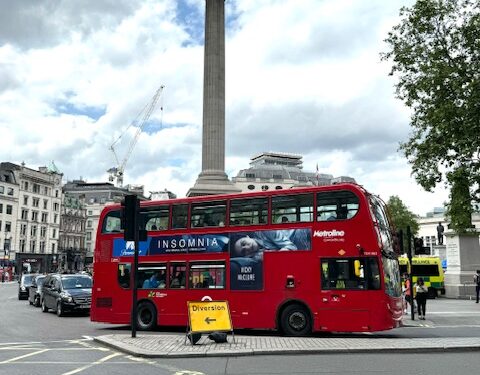
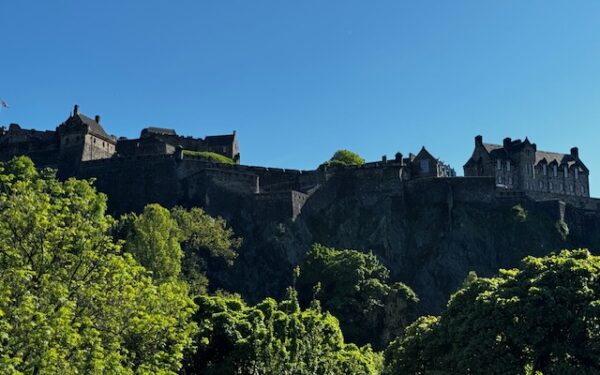


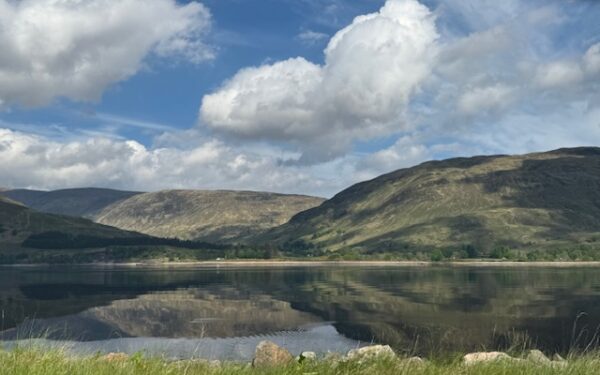
You find all the best places. Do you research before you go? If so, remind me to check with you before I take my next vacation–if ever. Those pastries and chocolate..OMG.
Both David and I, do a fair amount of research for each trip.
You had me at chocolate! Great photos as usual! Food photos make me so hungry. Seems like like another very successful outing for you world travelers! Cheers!
You always get the best photos, and the food always makes me hungry, but chocolate popsicle? I expect to meet that in my dreams 😱
Brussels:
Les Galeries Royales Saint Hubert.
An exquisite architectural masterpiece in which to see (and sample??) equally exquisite world-famous chocolates.
The Art and History Museum.
From Egyptian Mummies to African Masks to Flemish Tapestries to Roman Mosaics, it’s truly mind boggling how much incredible art, as well as artifacts, have survived. Not only in this museum, but worldwide. Bless those merchant seamen for having the foresight to bring much “back home.” I’ve often wondered what will survive from our “throw away” society.
Grand Place.
Aptly named. Grand it is! A fine example of very impressive architectural styles in vogue throughout the ages.
Mannekin Pis.
My favorite statuary so far. Love the story, whether true or not, of how the little boy saved the city!
Bruges.
Known as one of the top European Christmas Market destinations, I had no idea an internationally renowned chocolatier could be found there as well. Dumon Chocolatier has been added to the Christmas Market Bucket List.
As seen …
Street Art; Street Characters; Street Fashion. David, thank you for your keen eye and photographer’s genius.